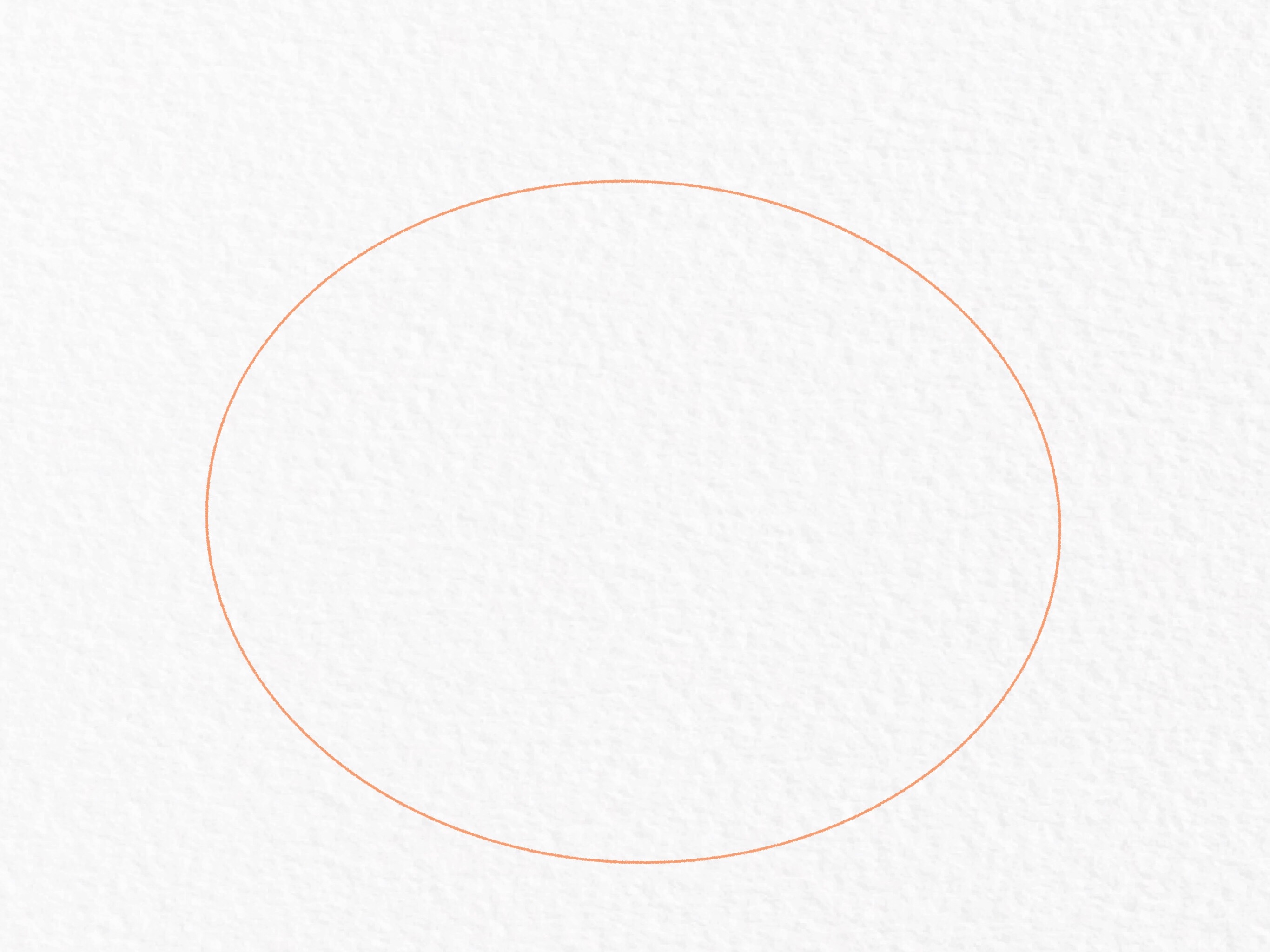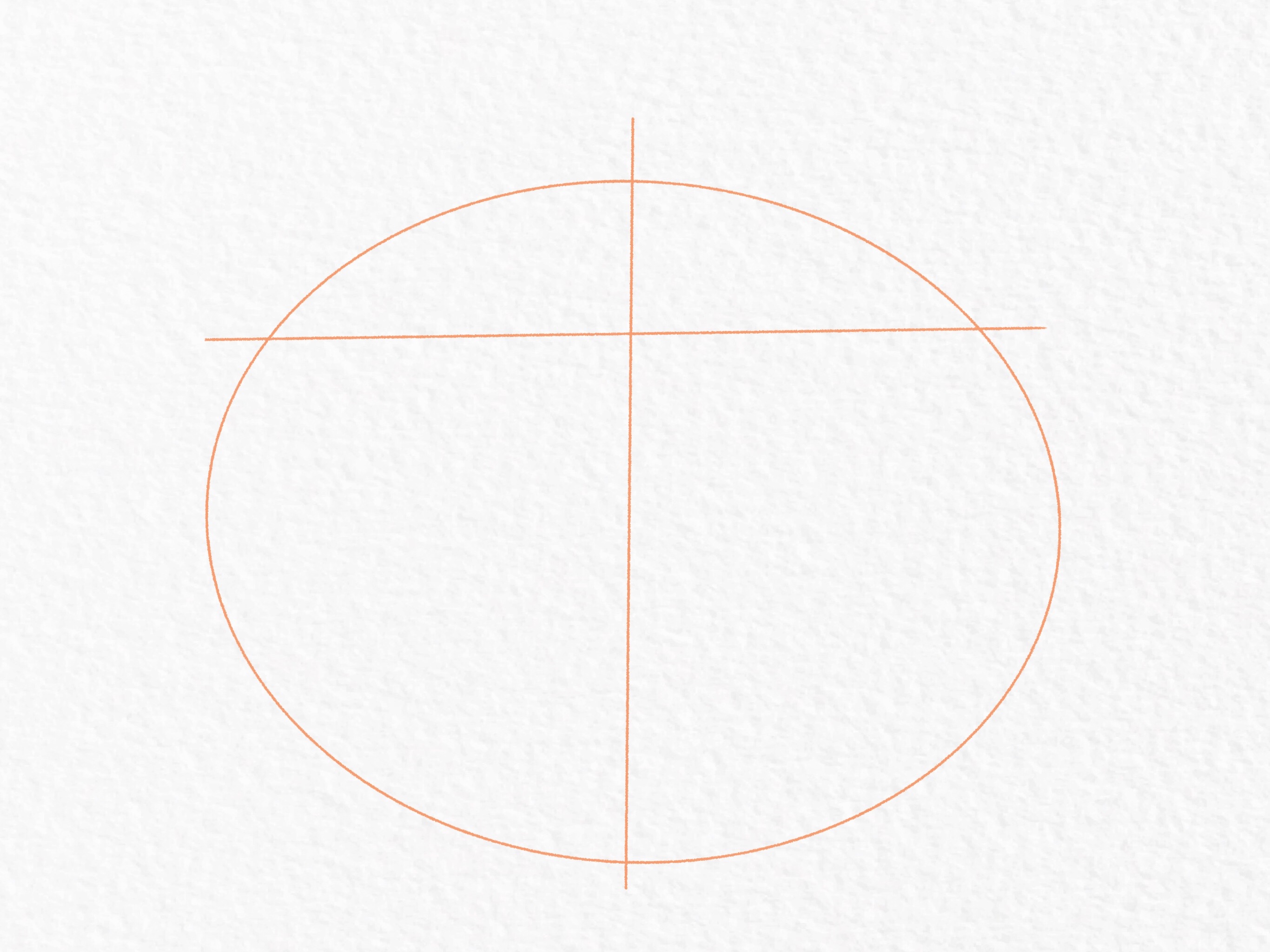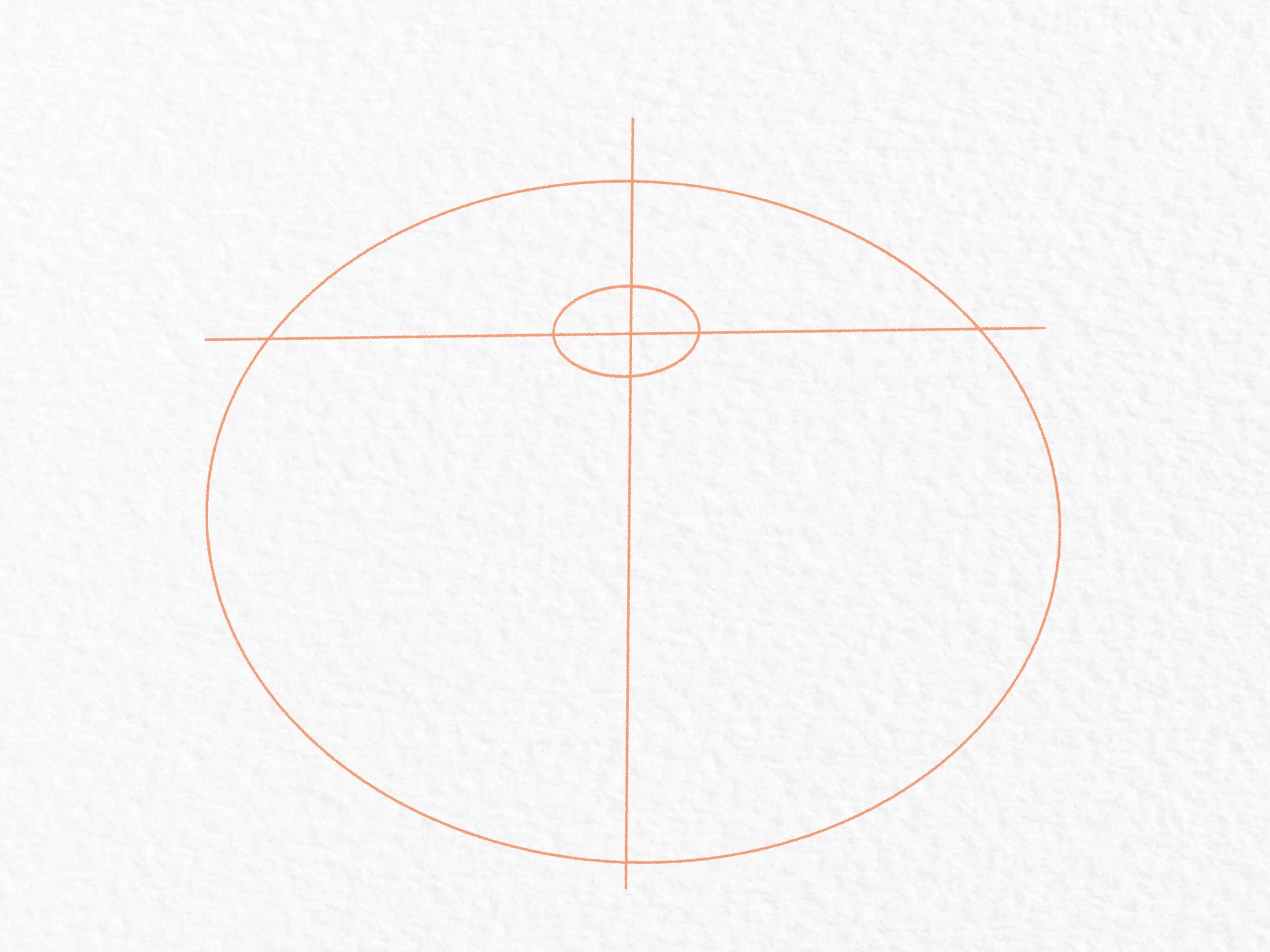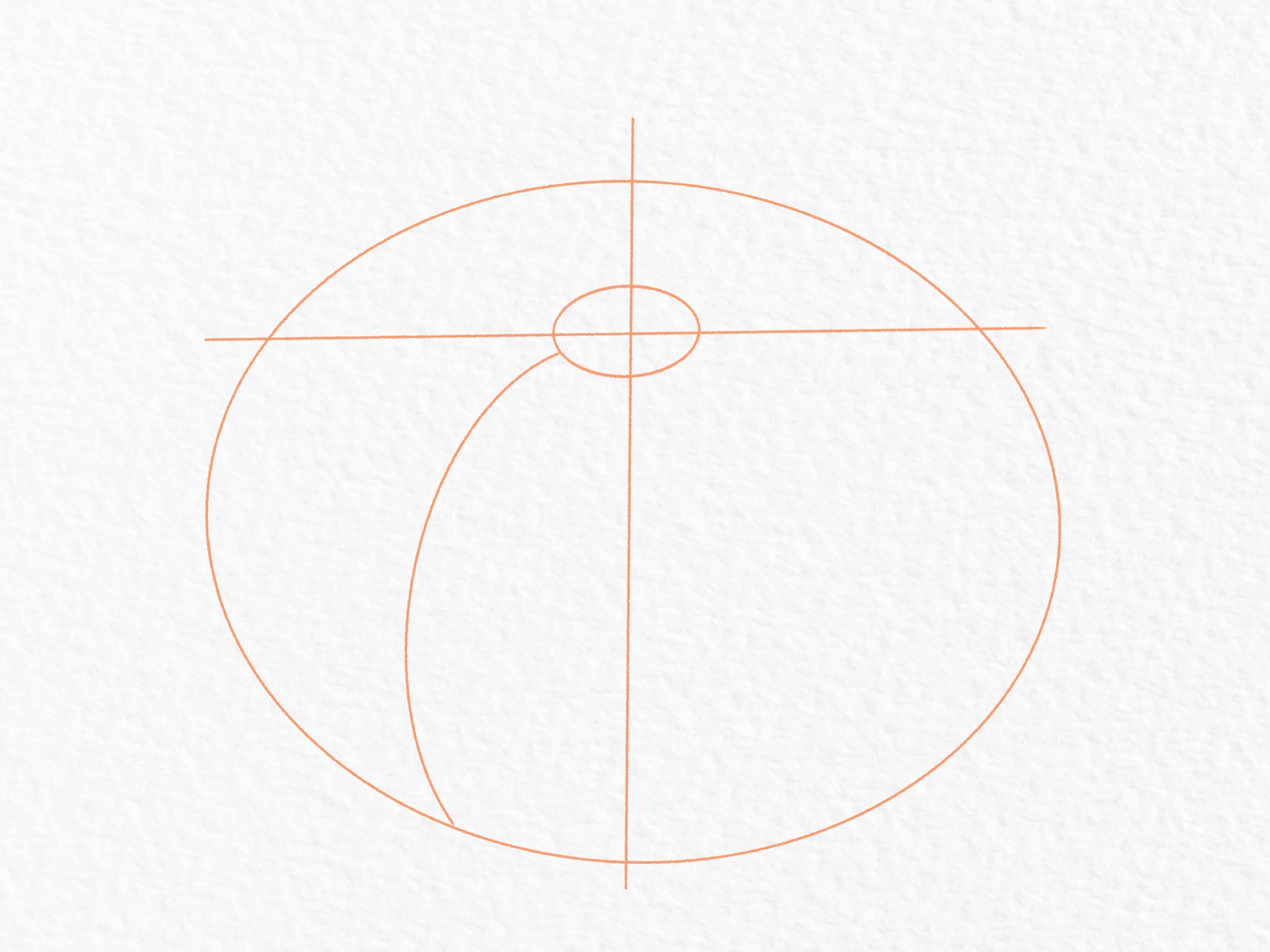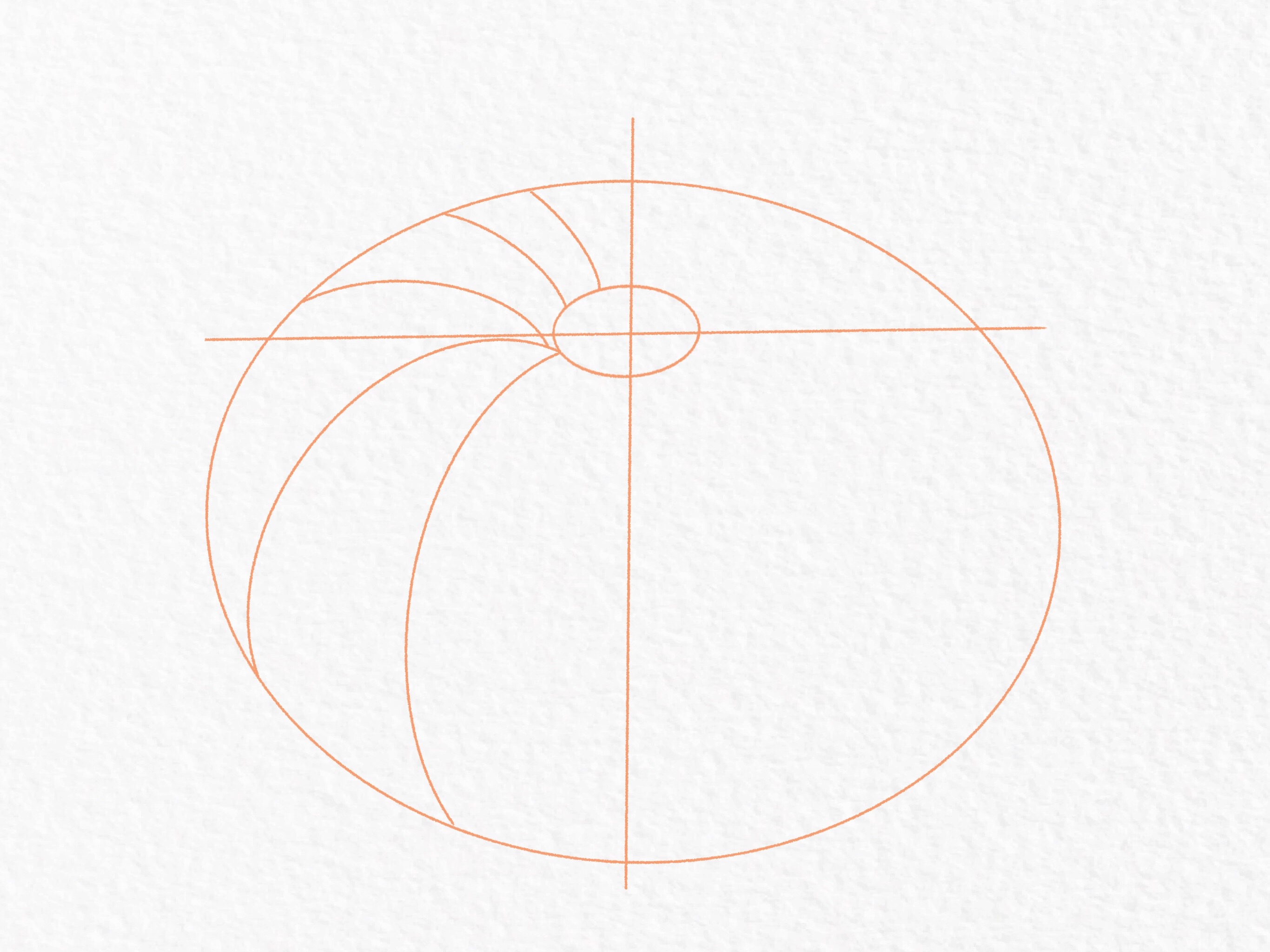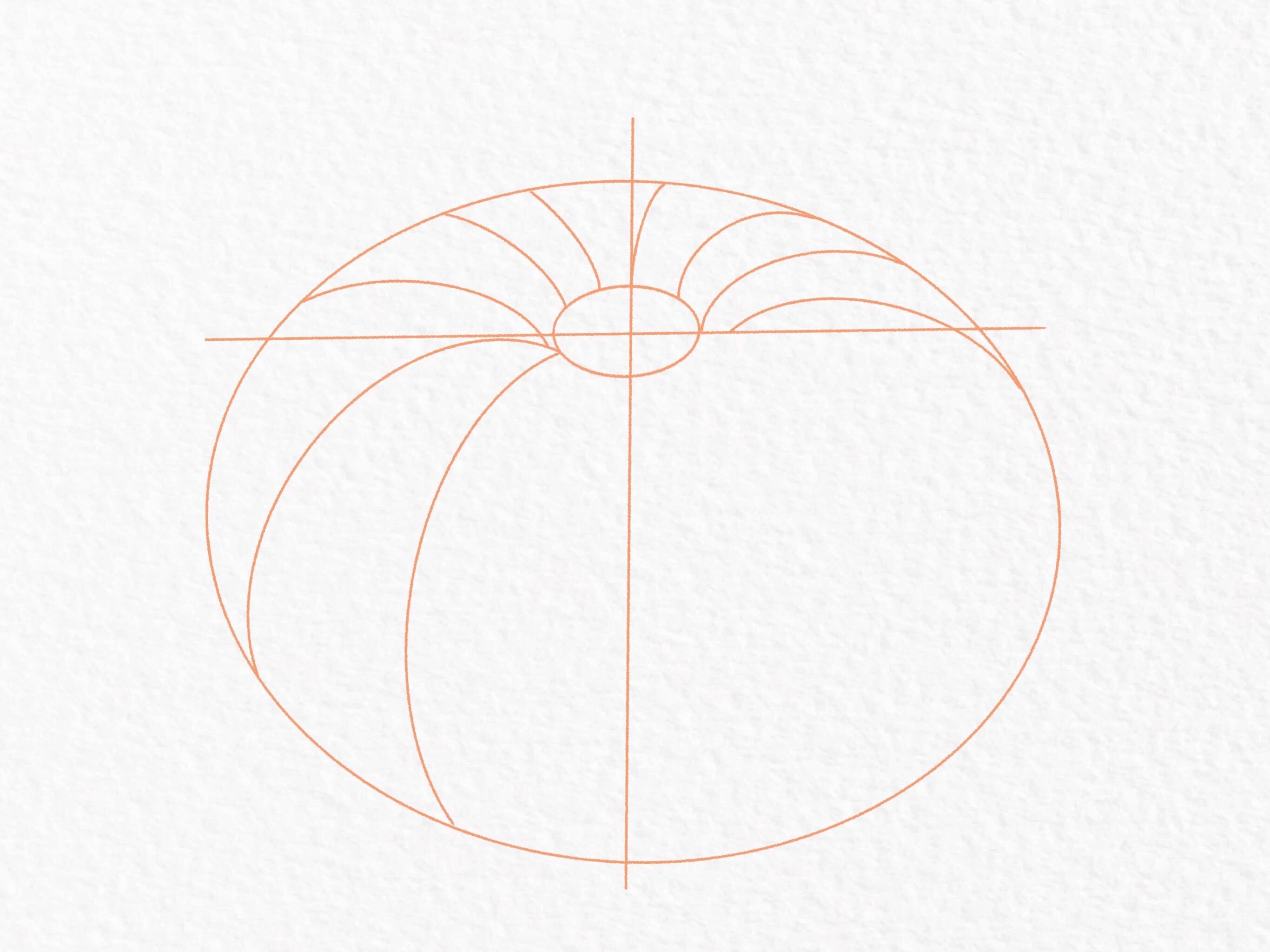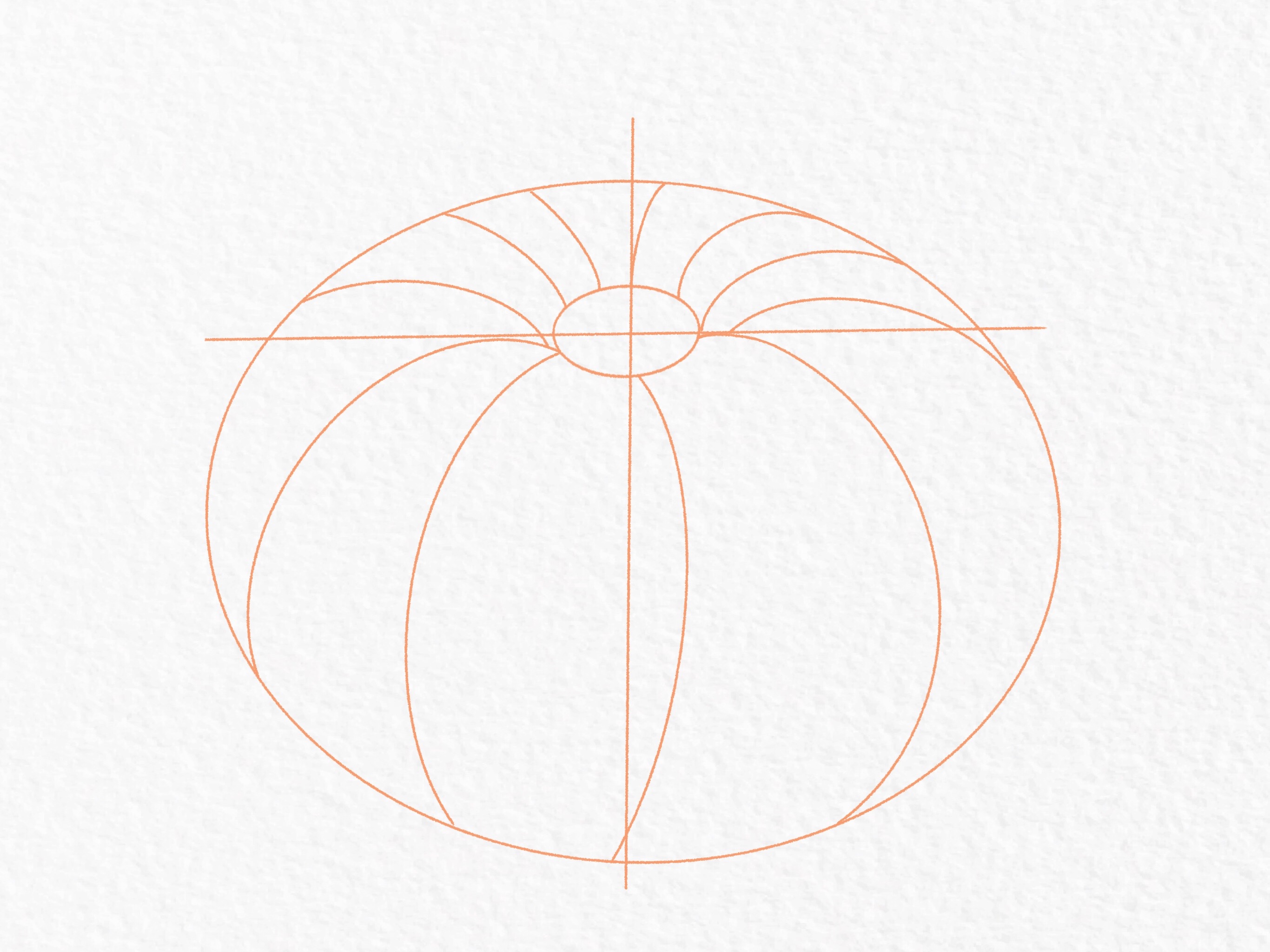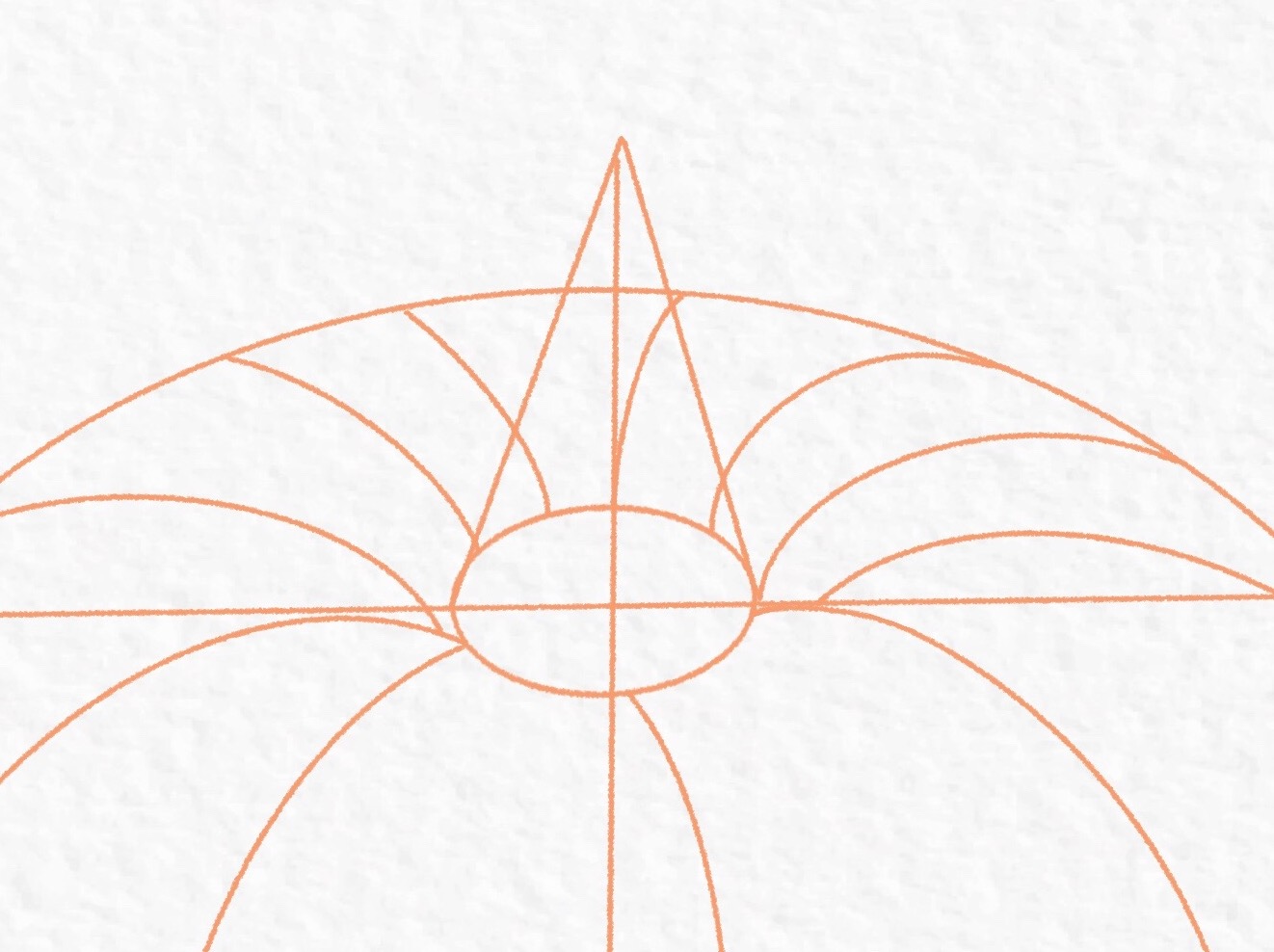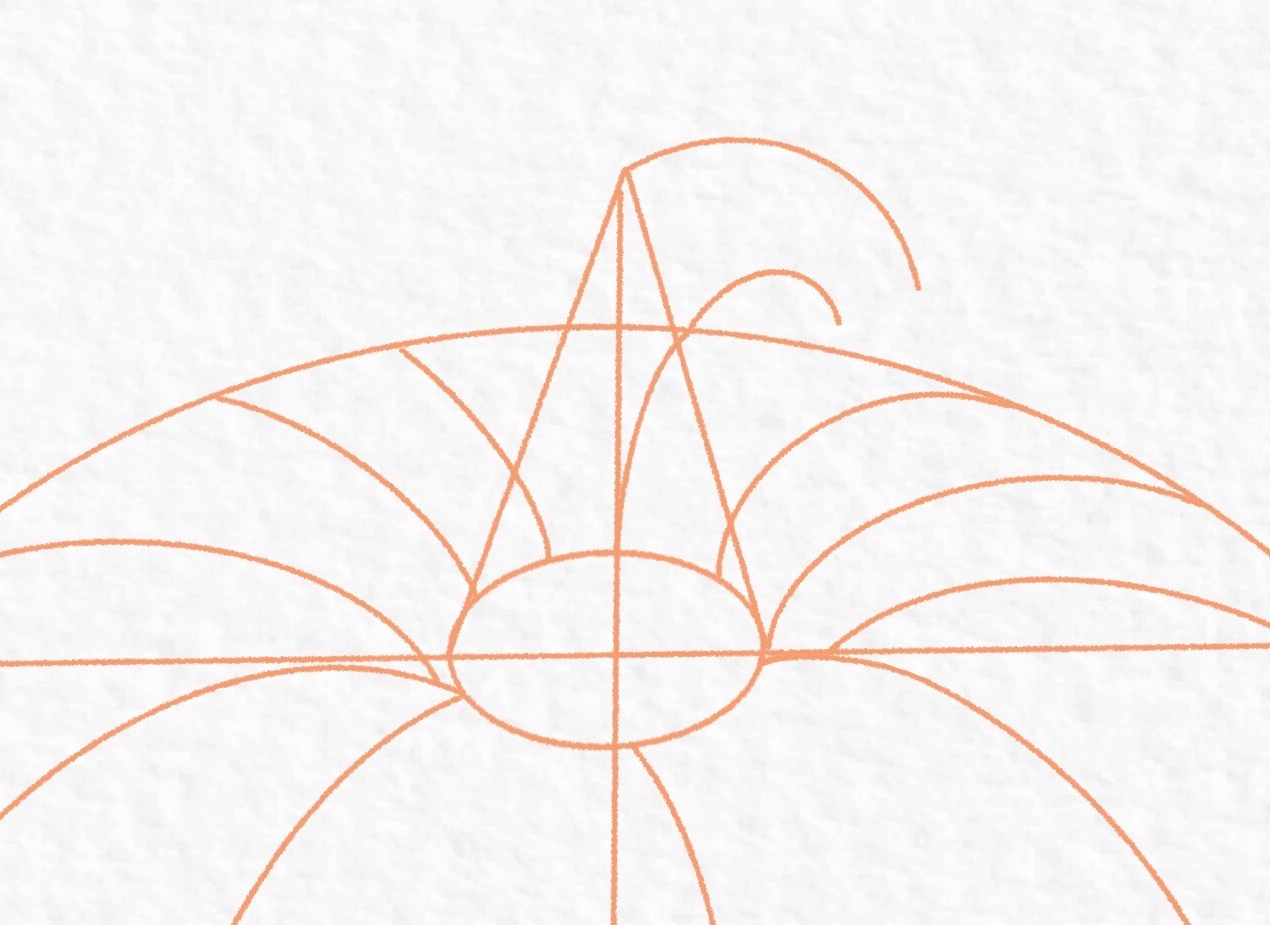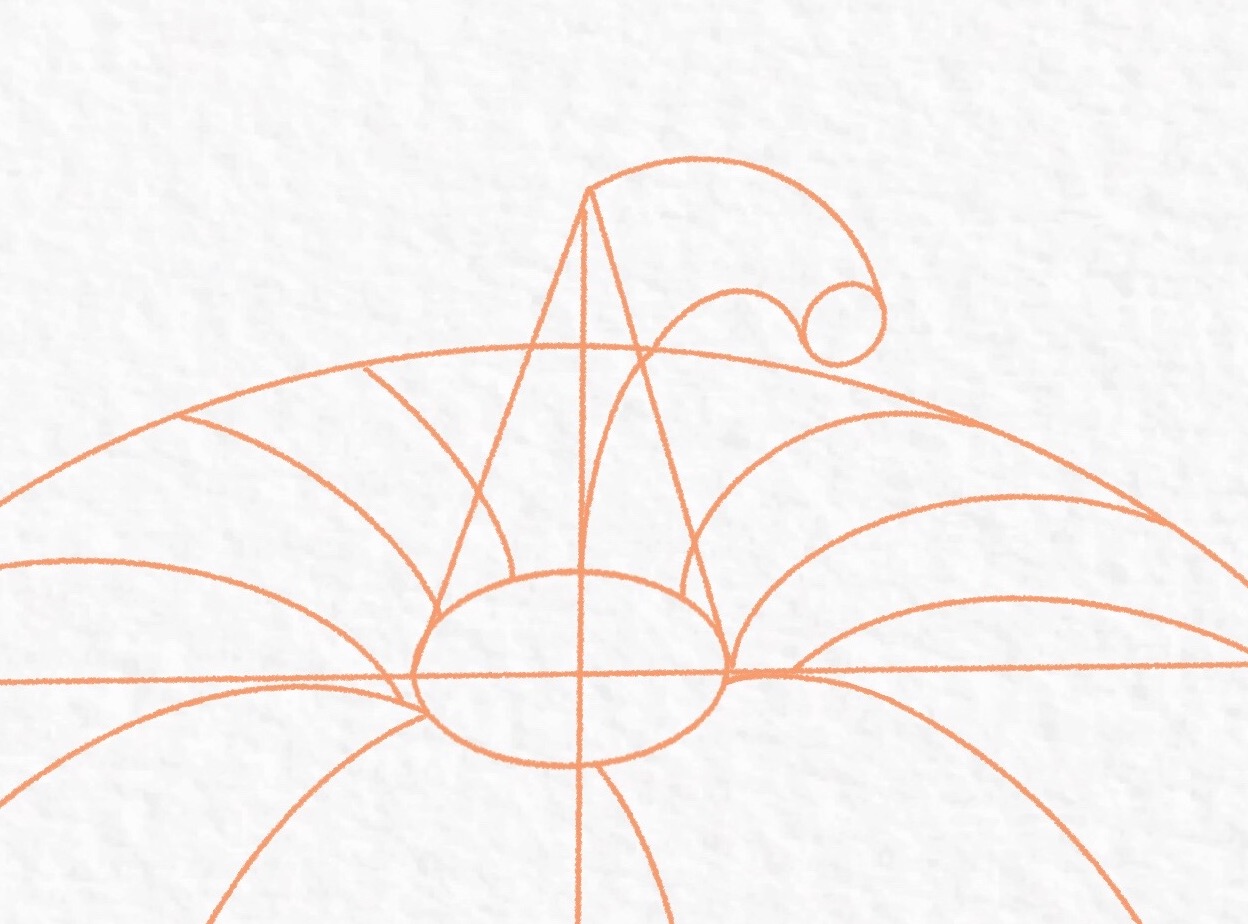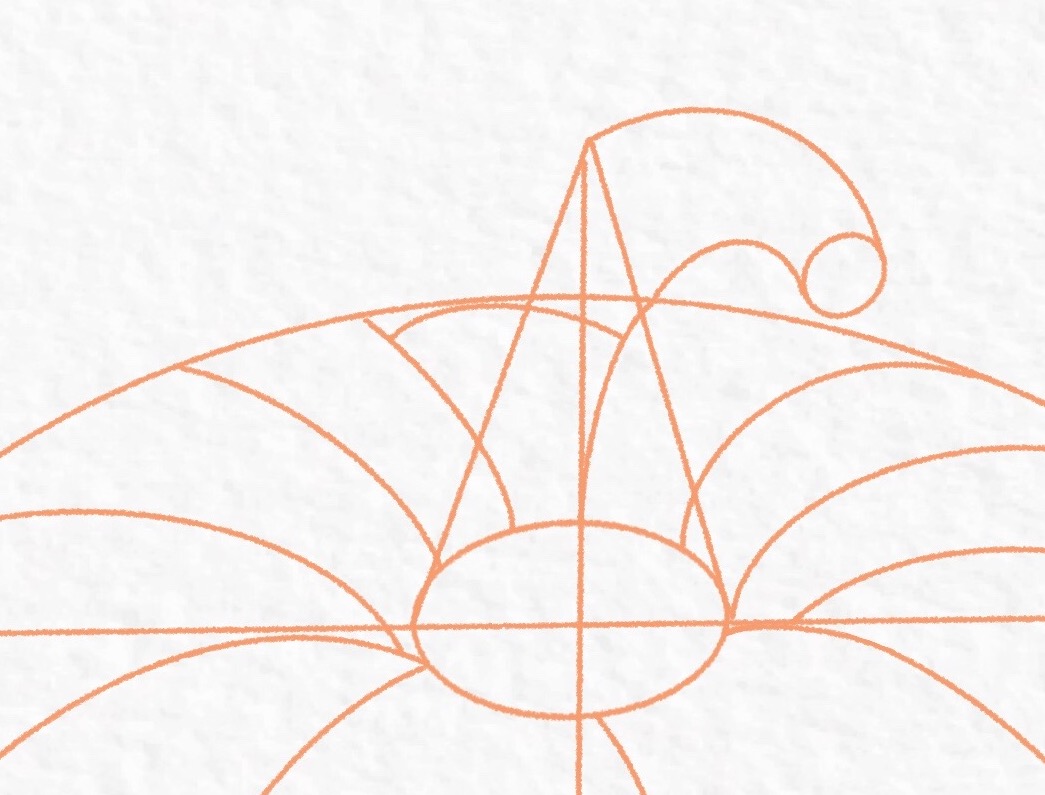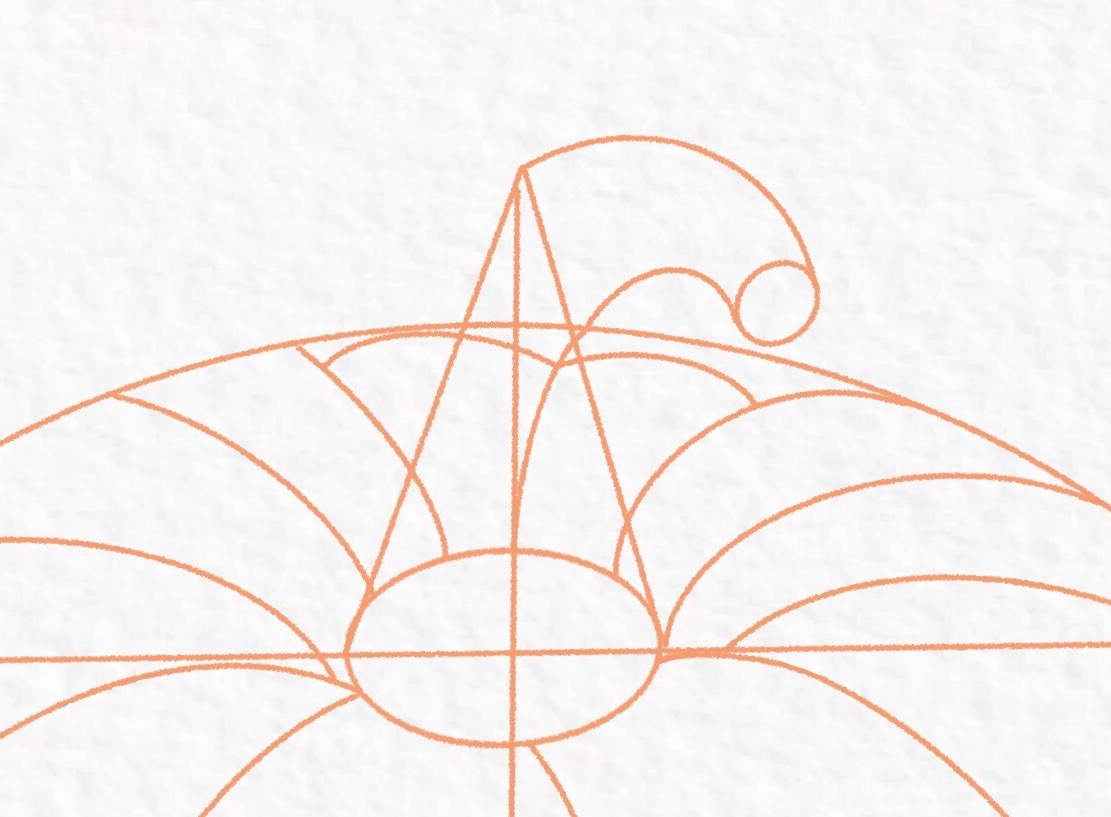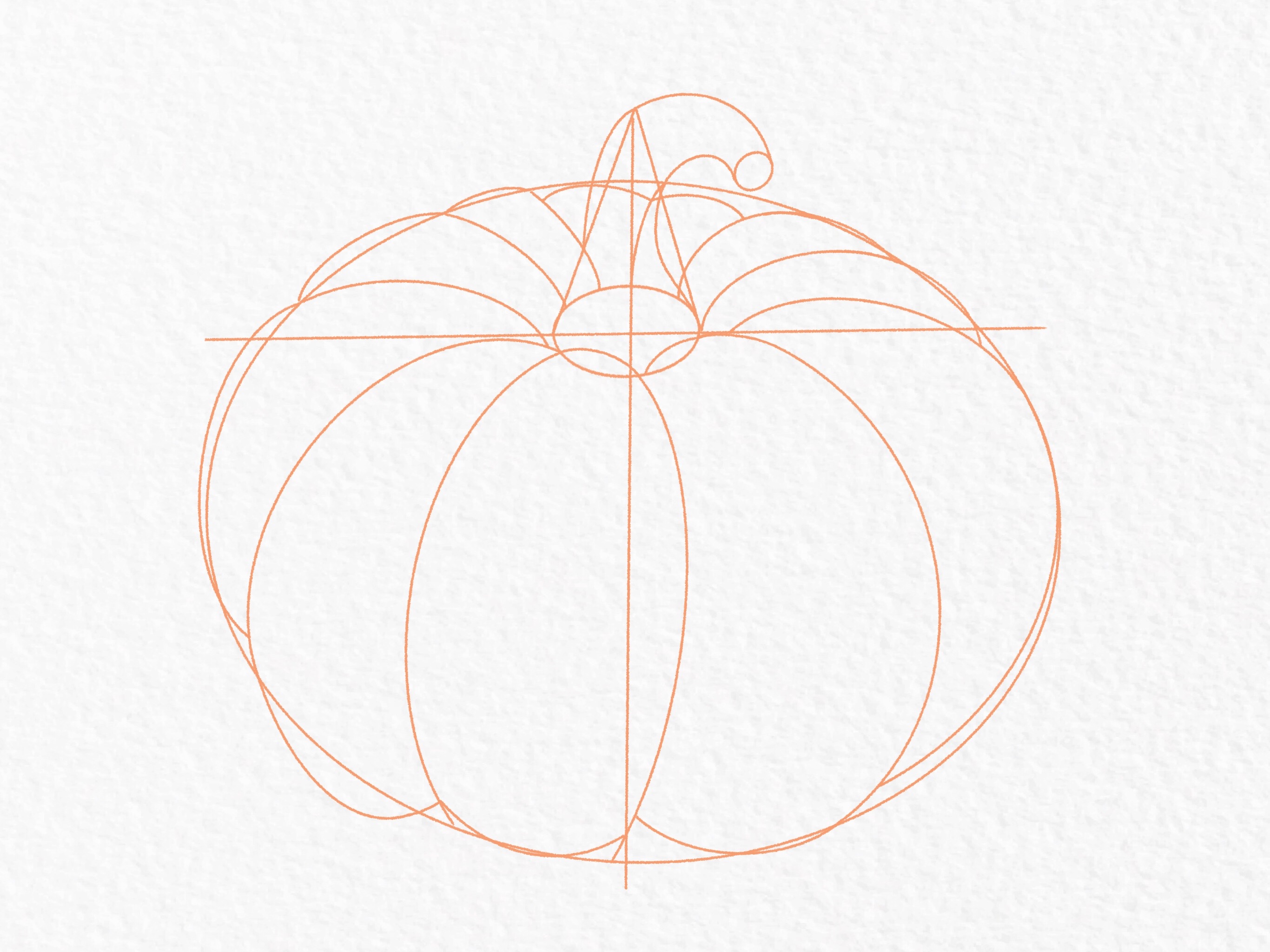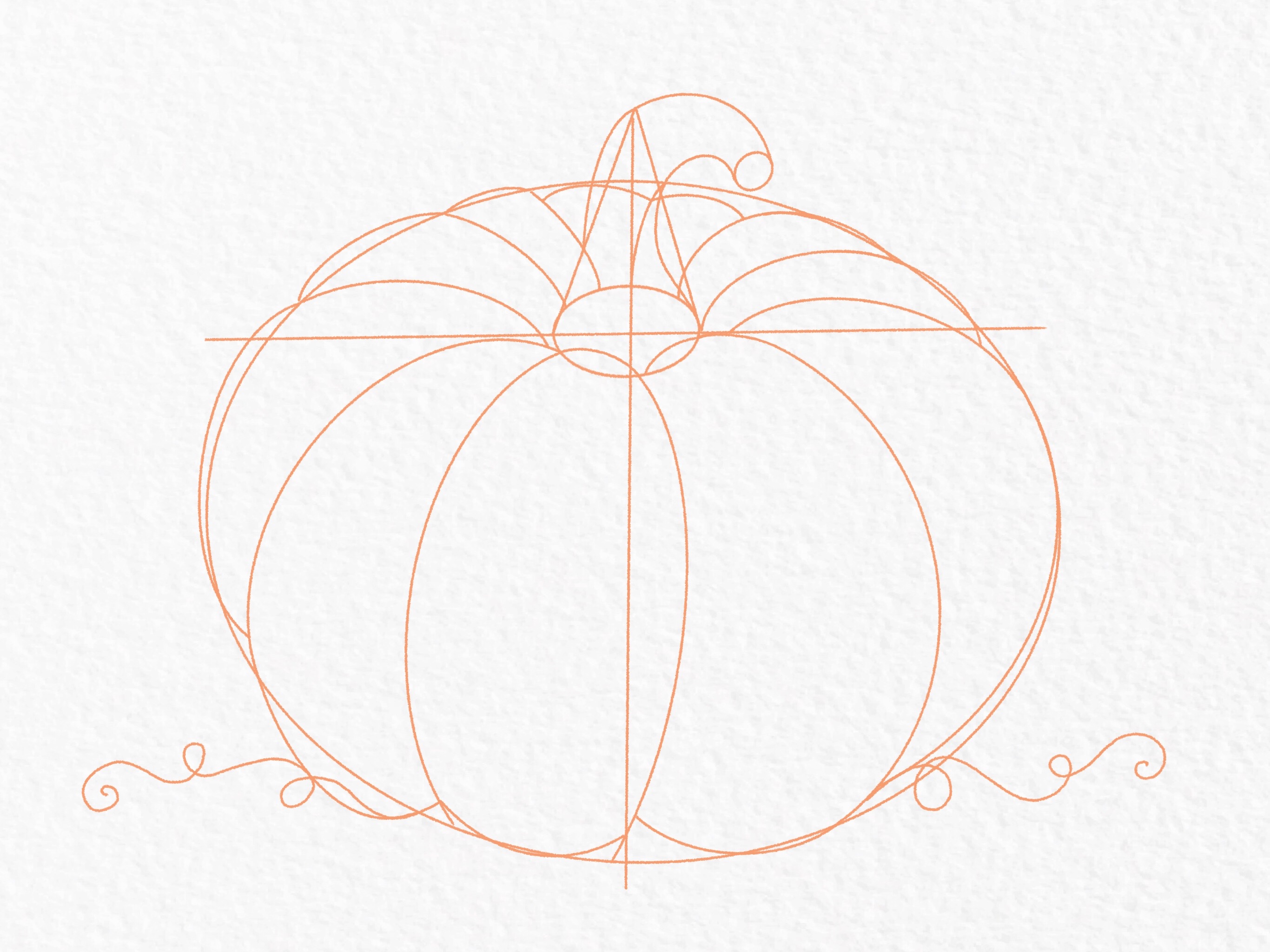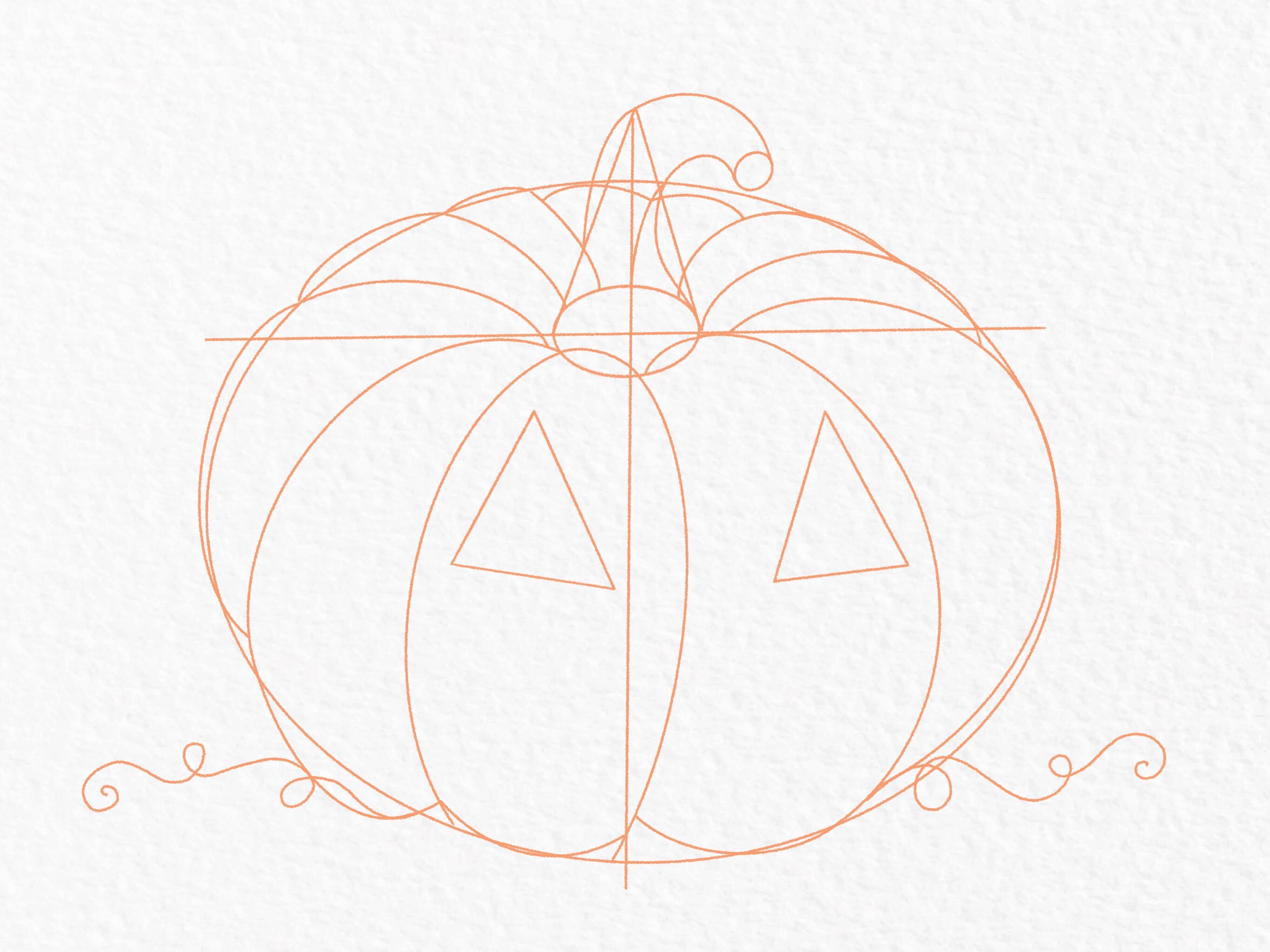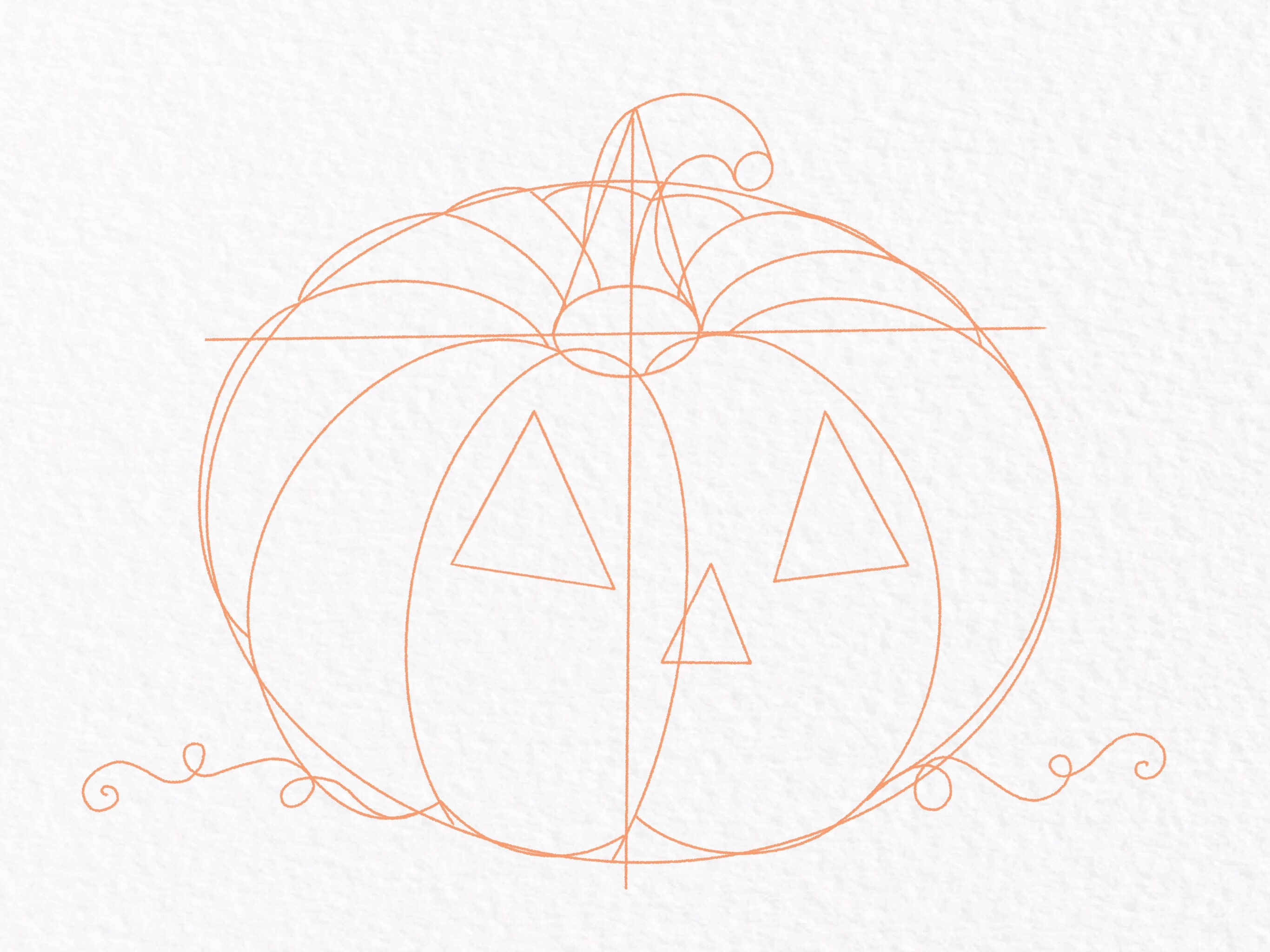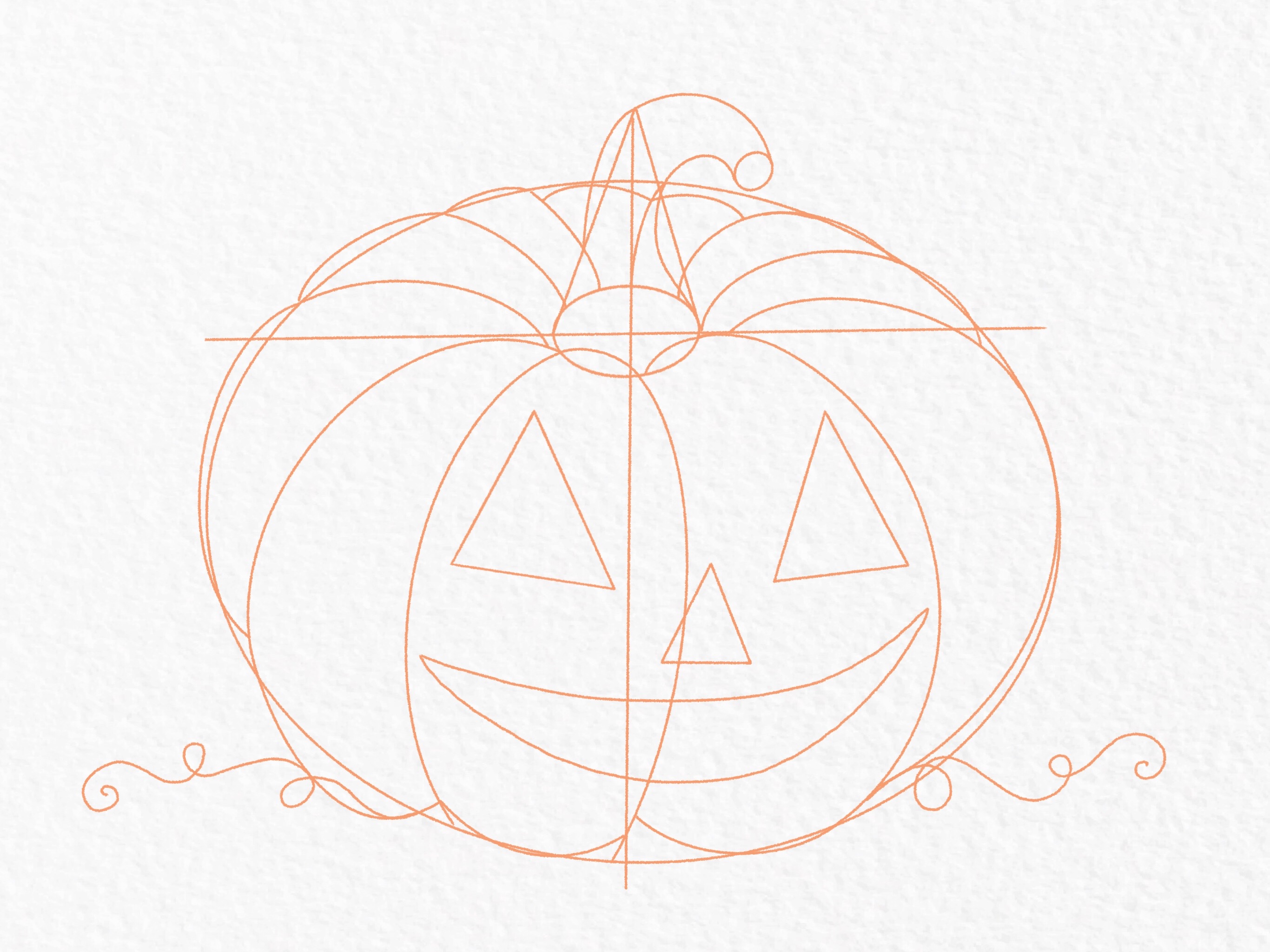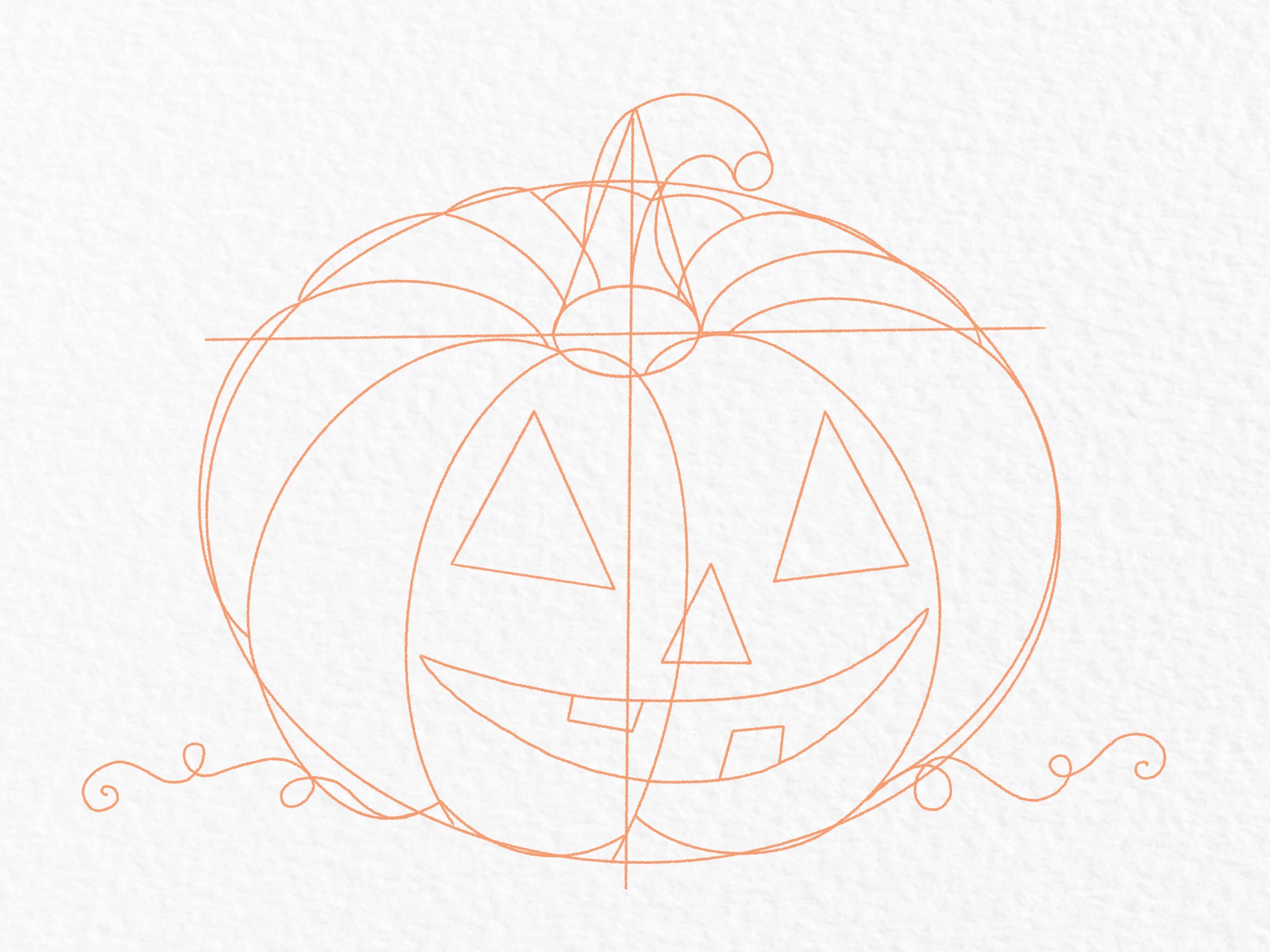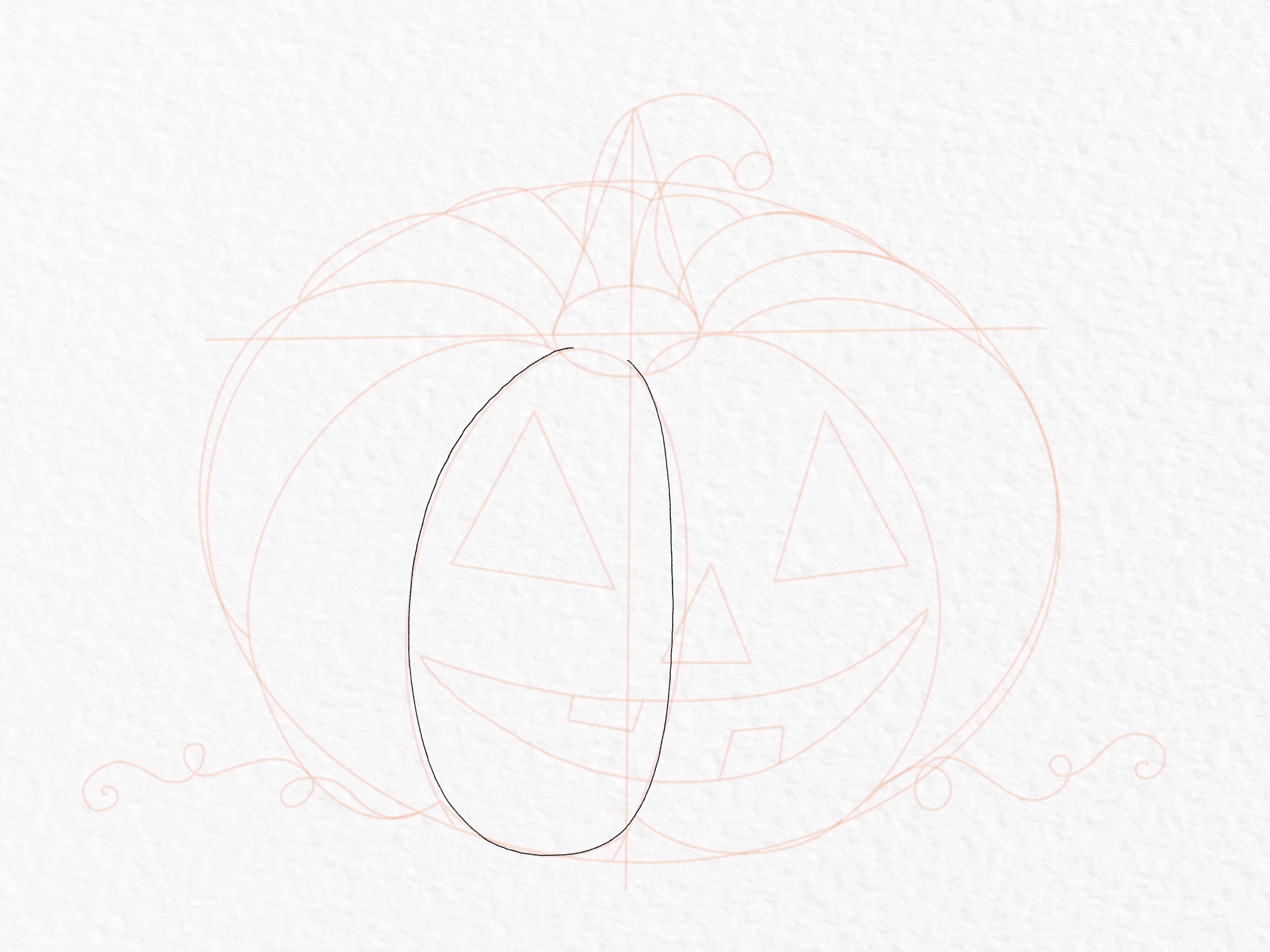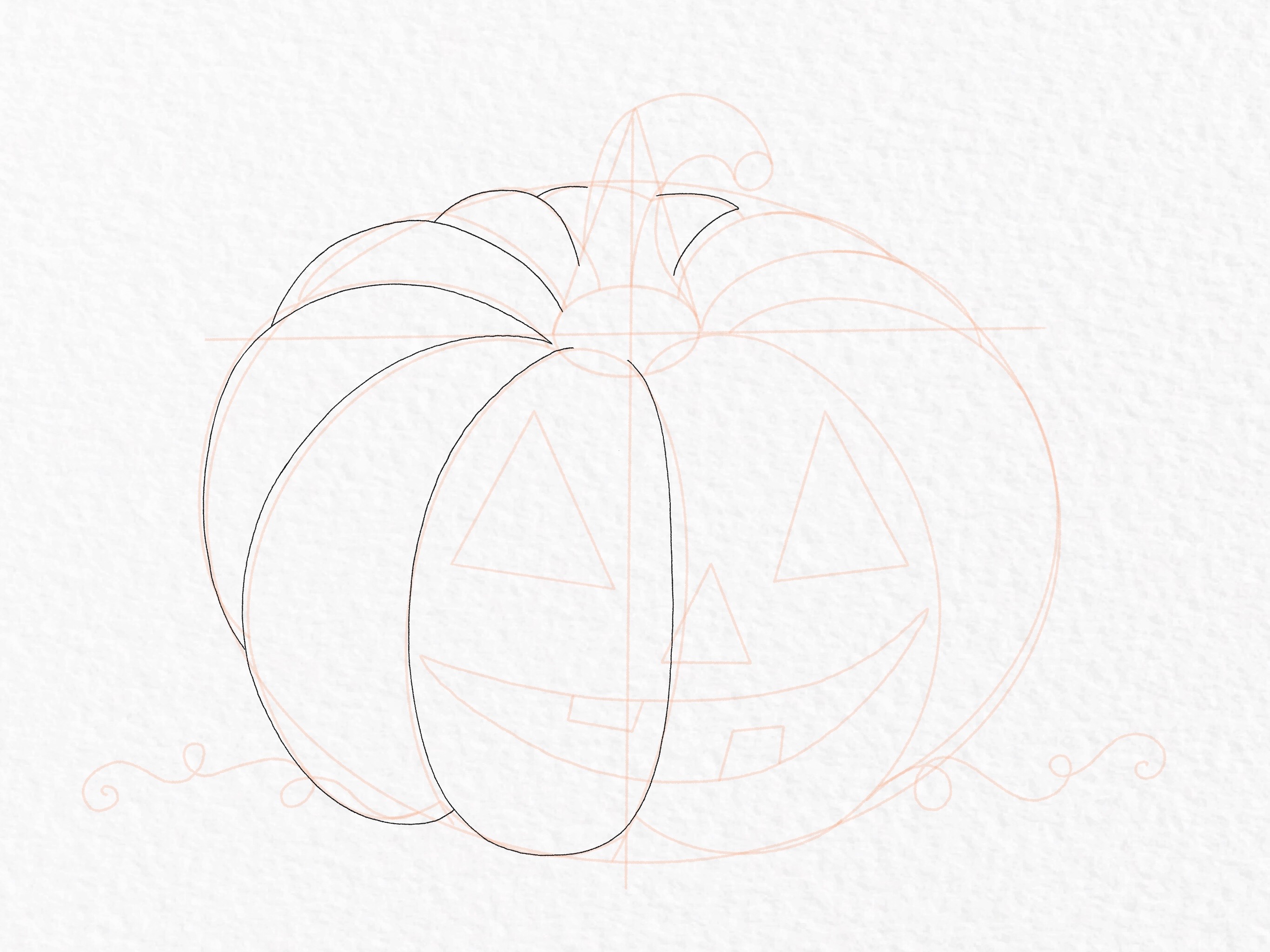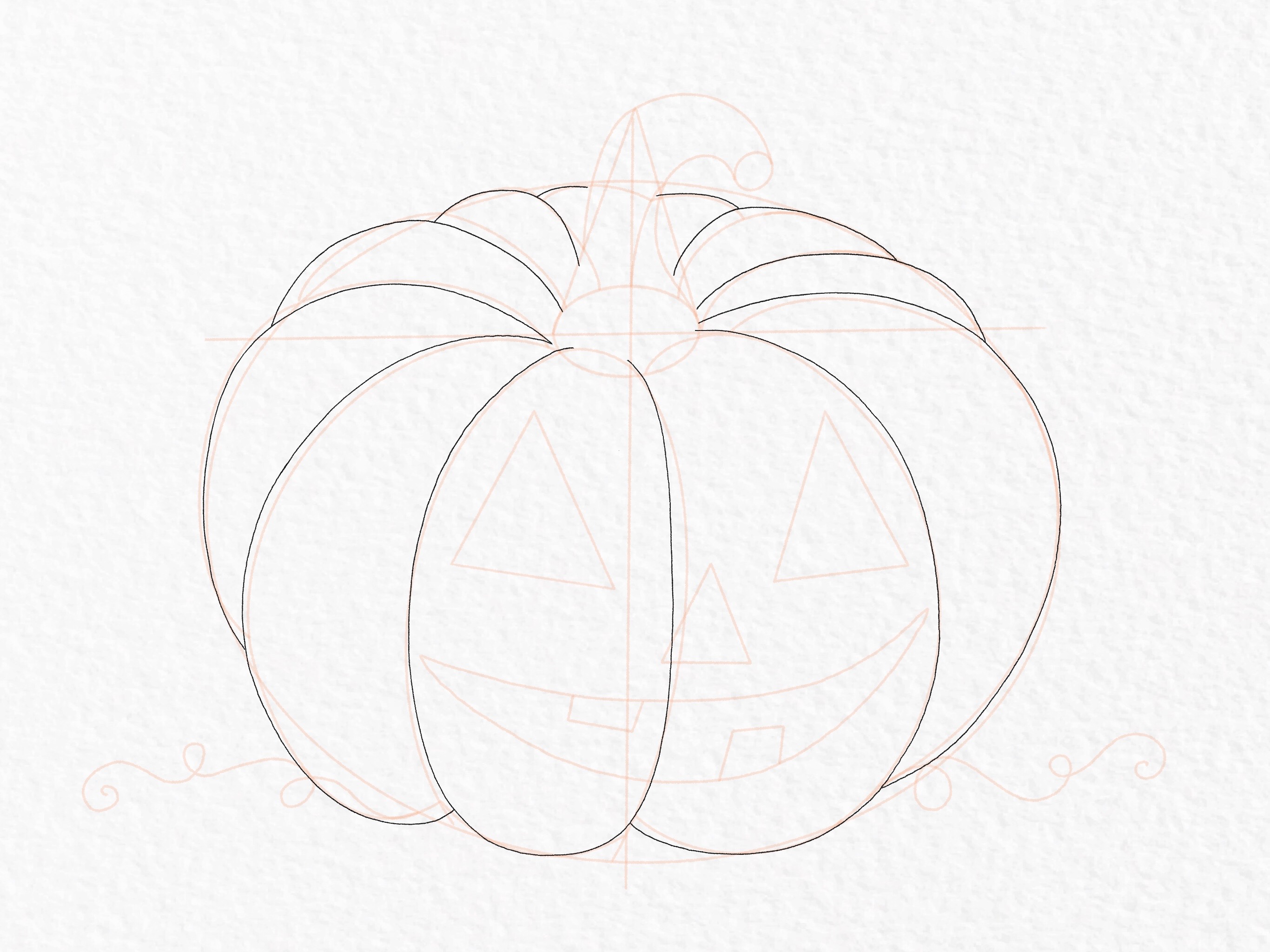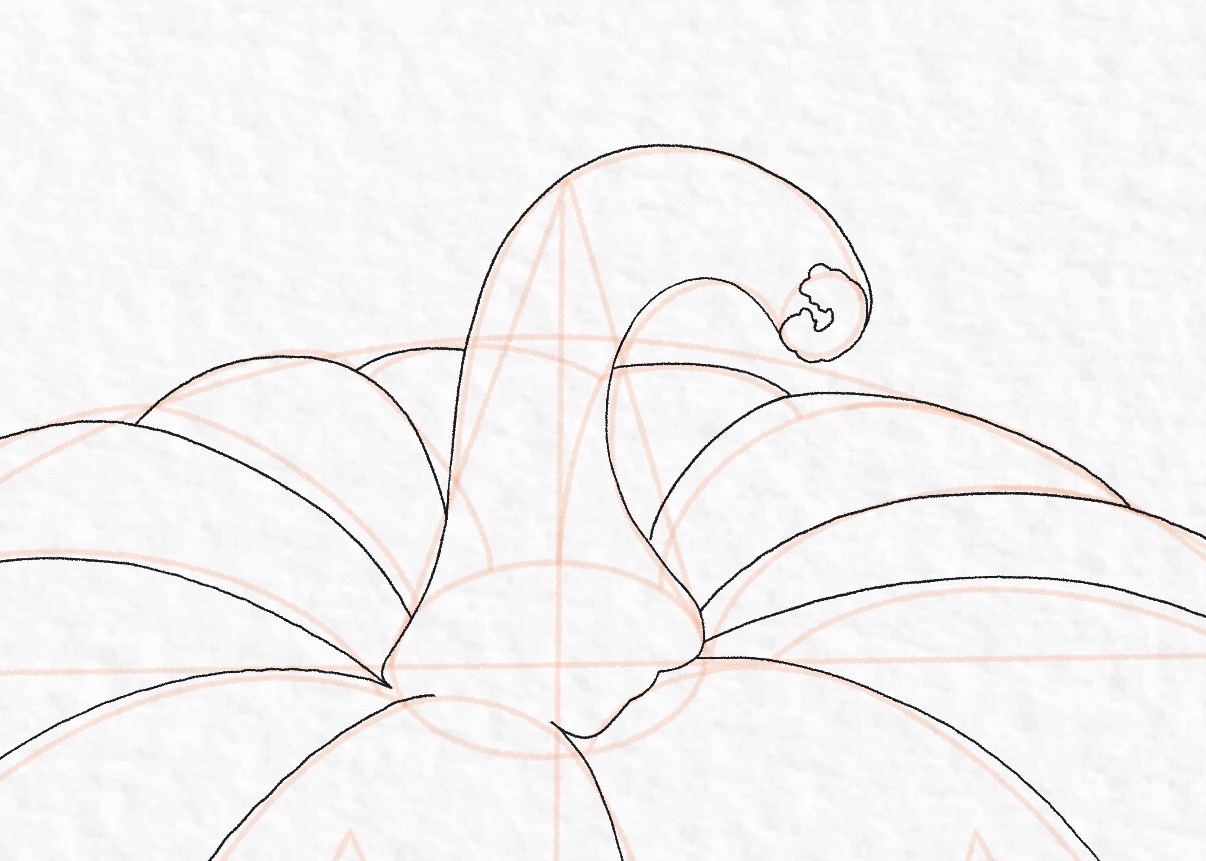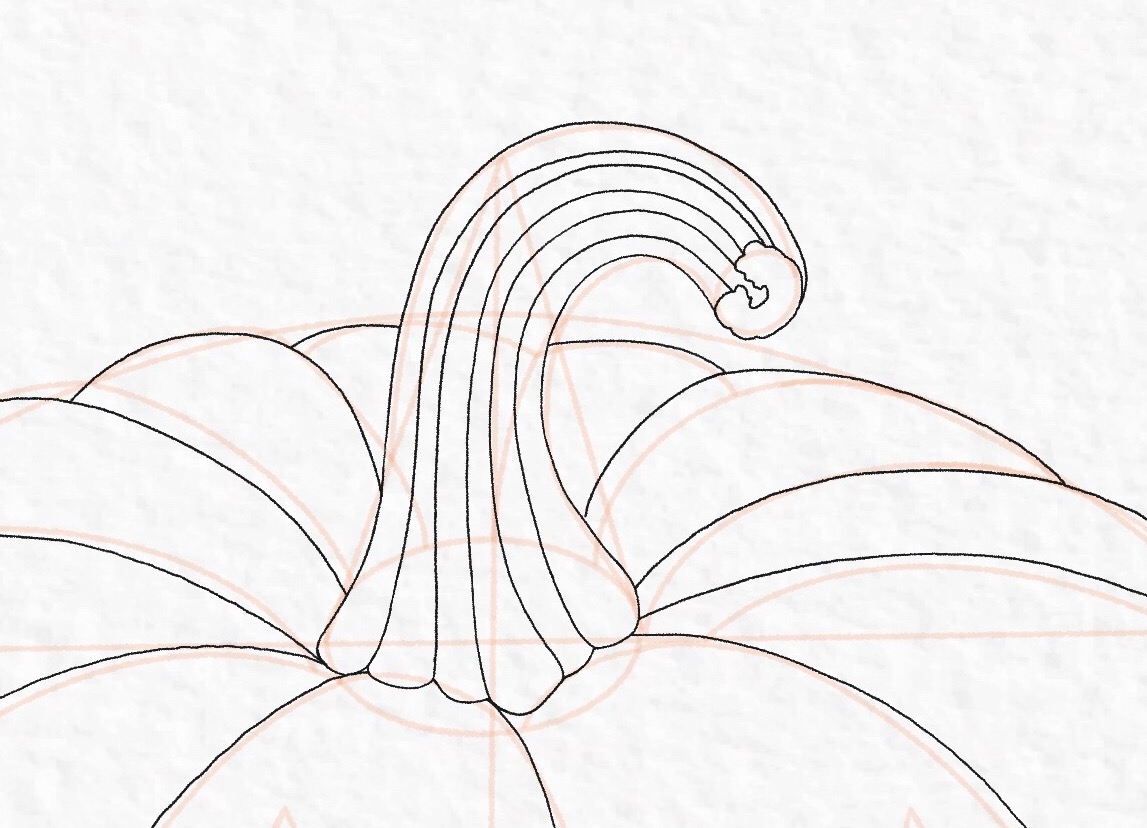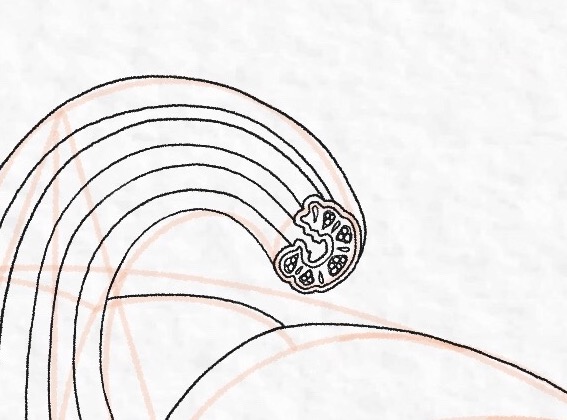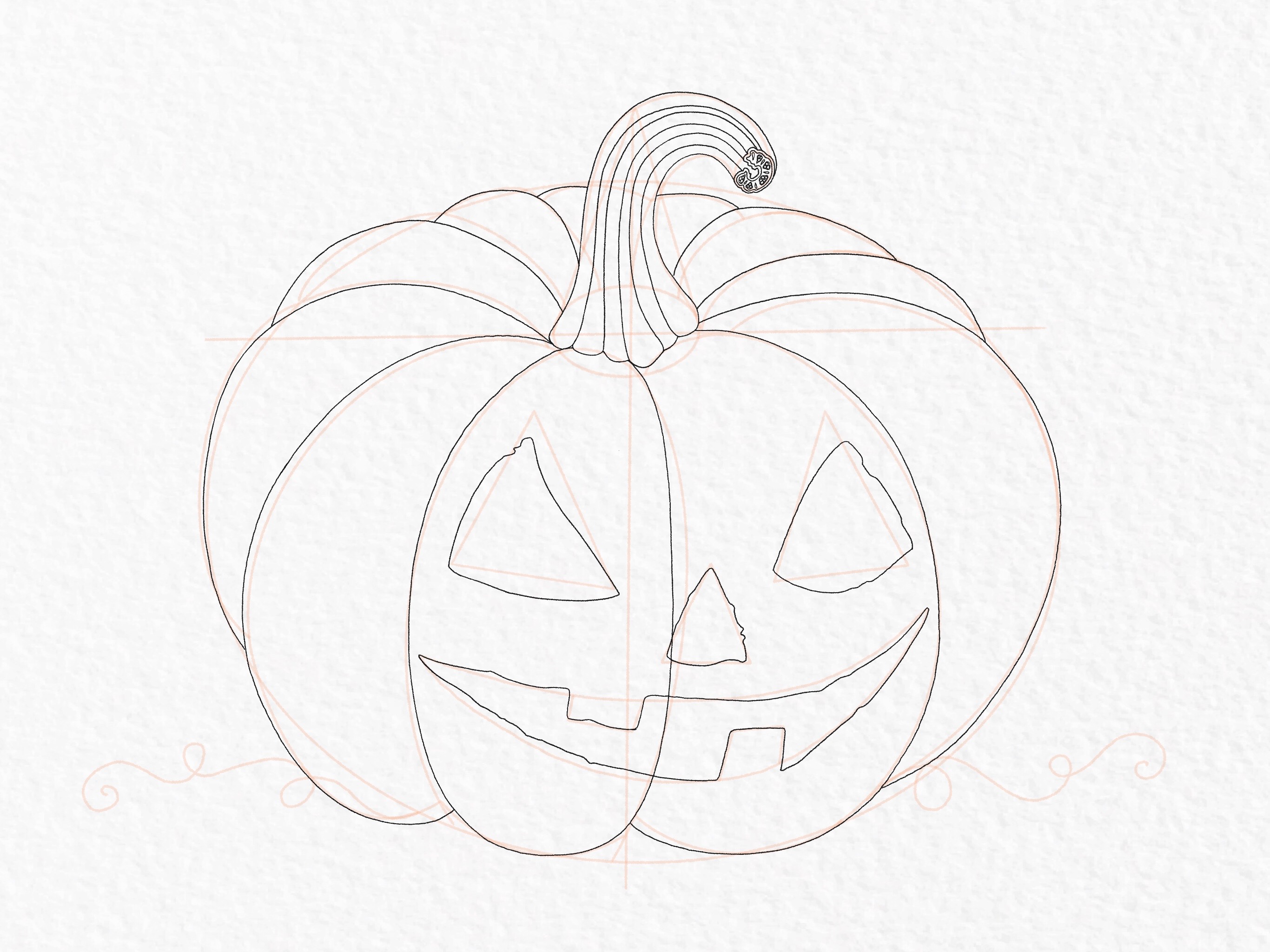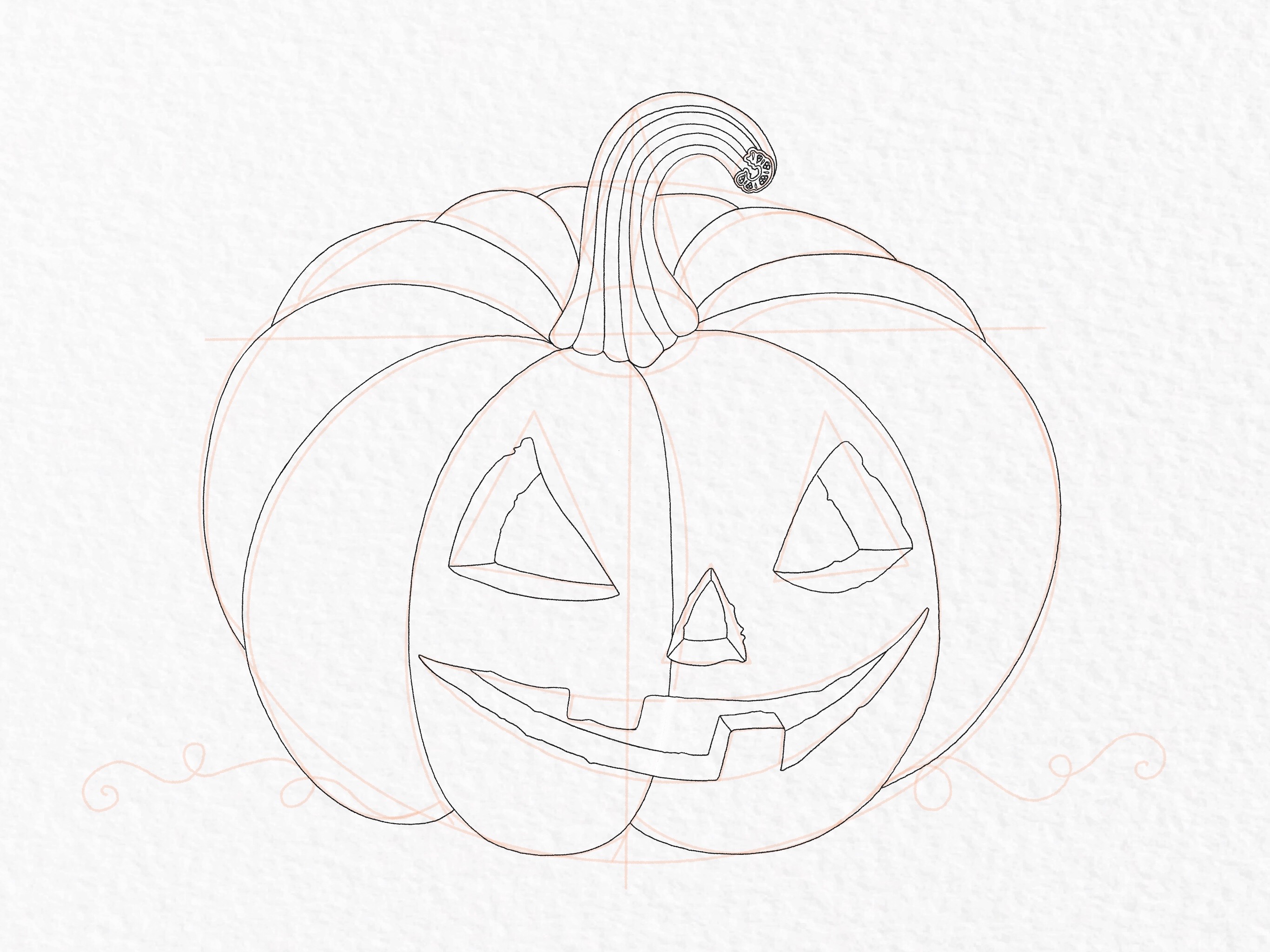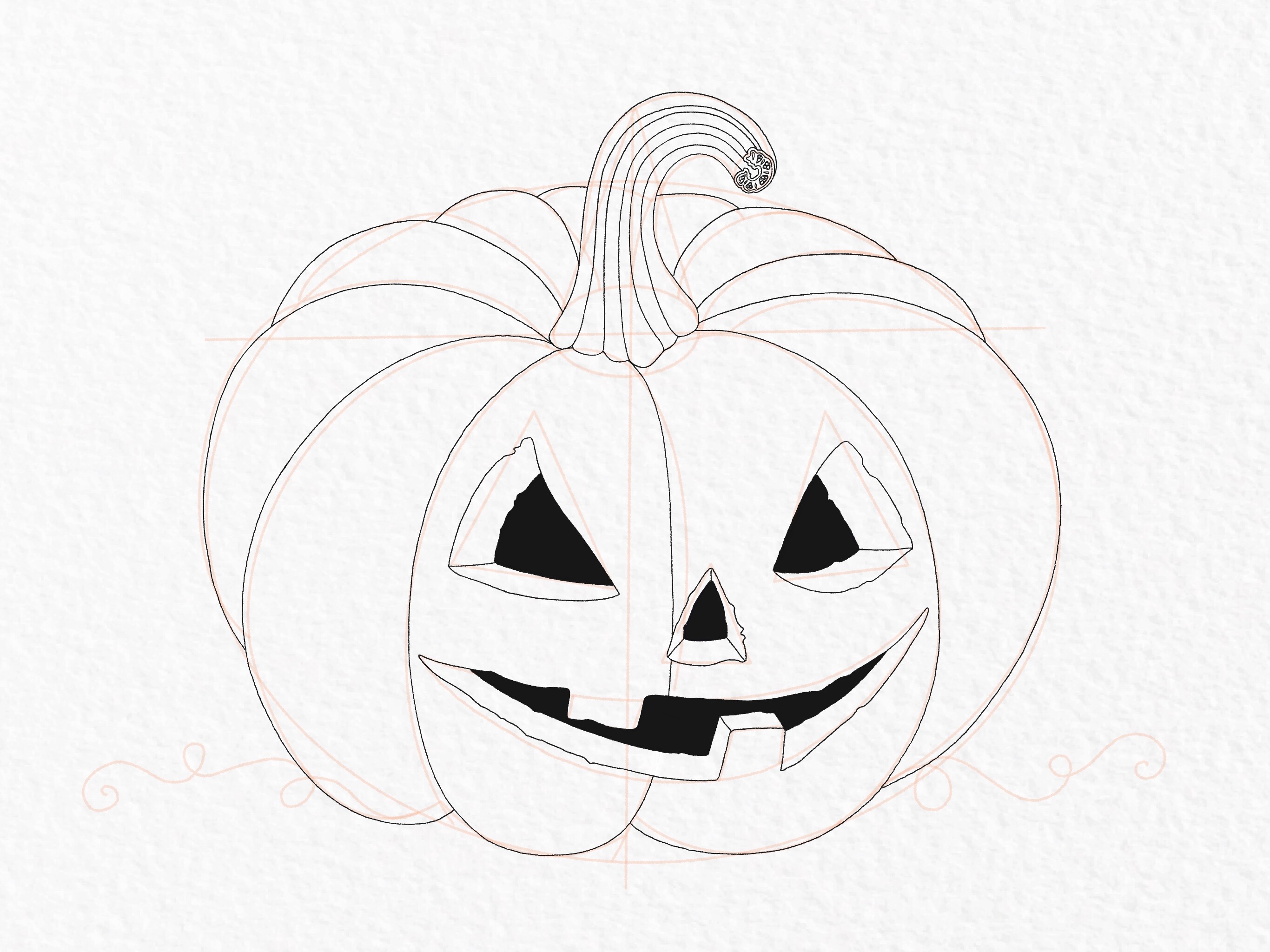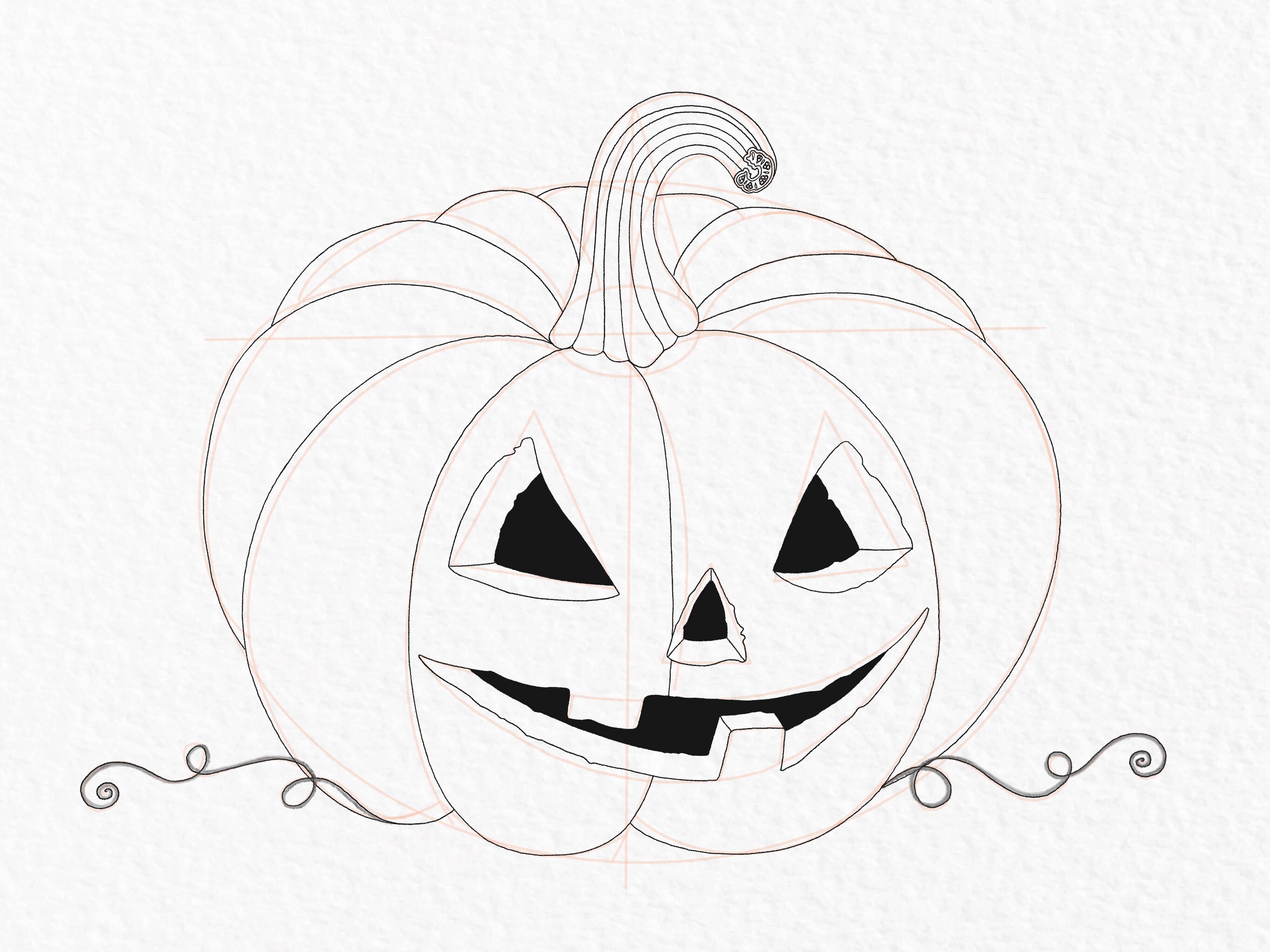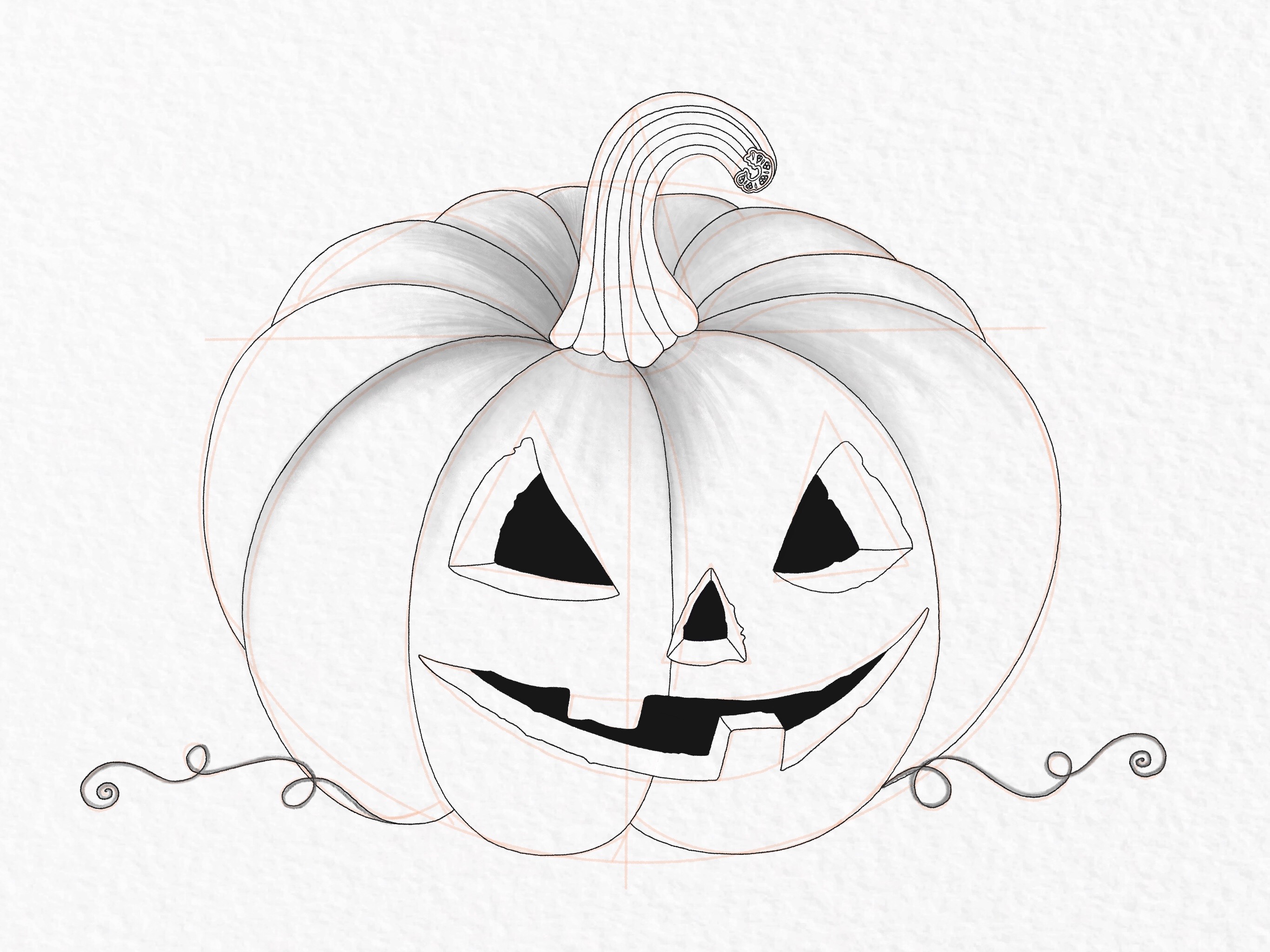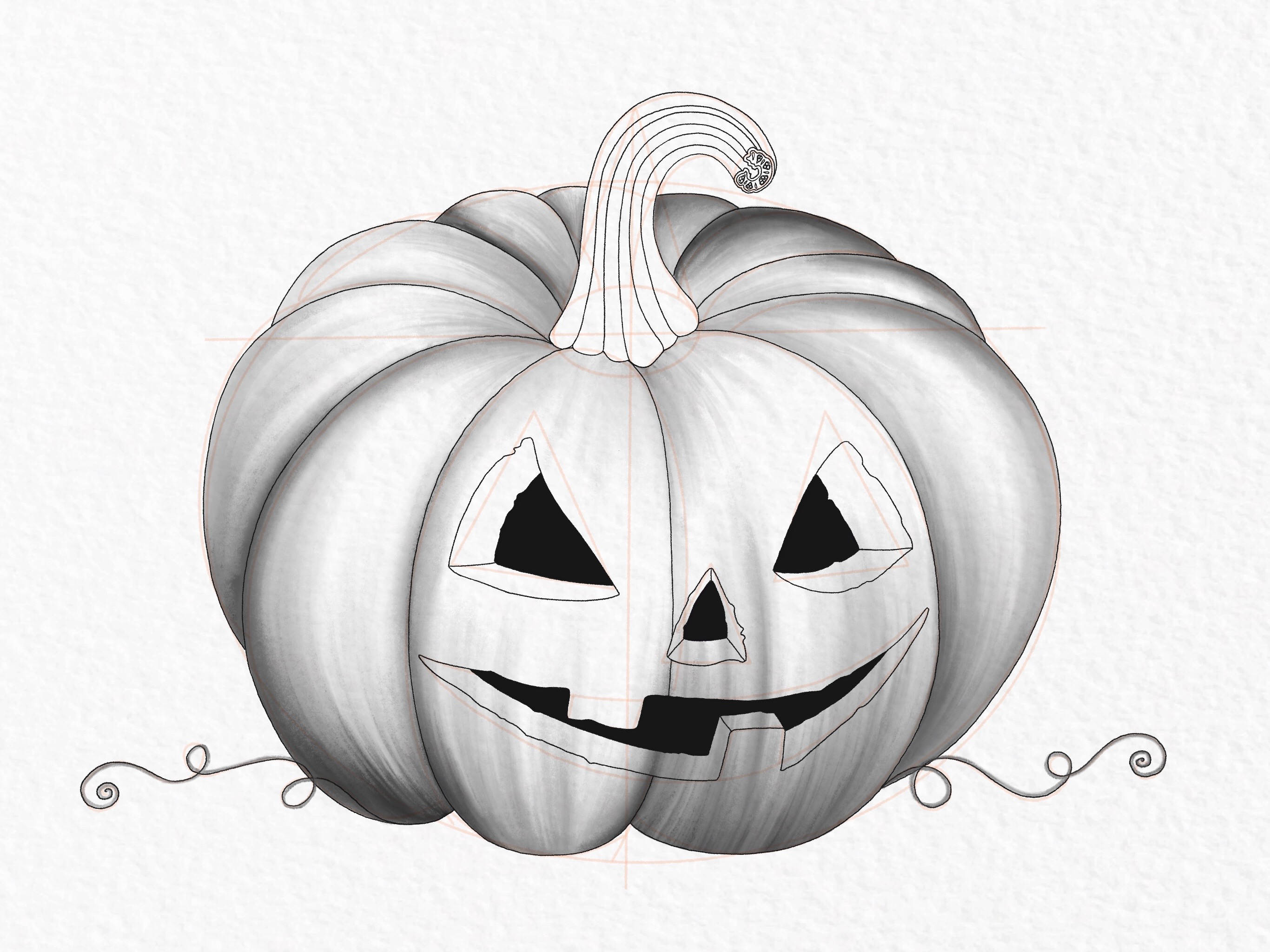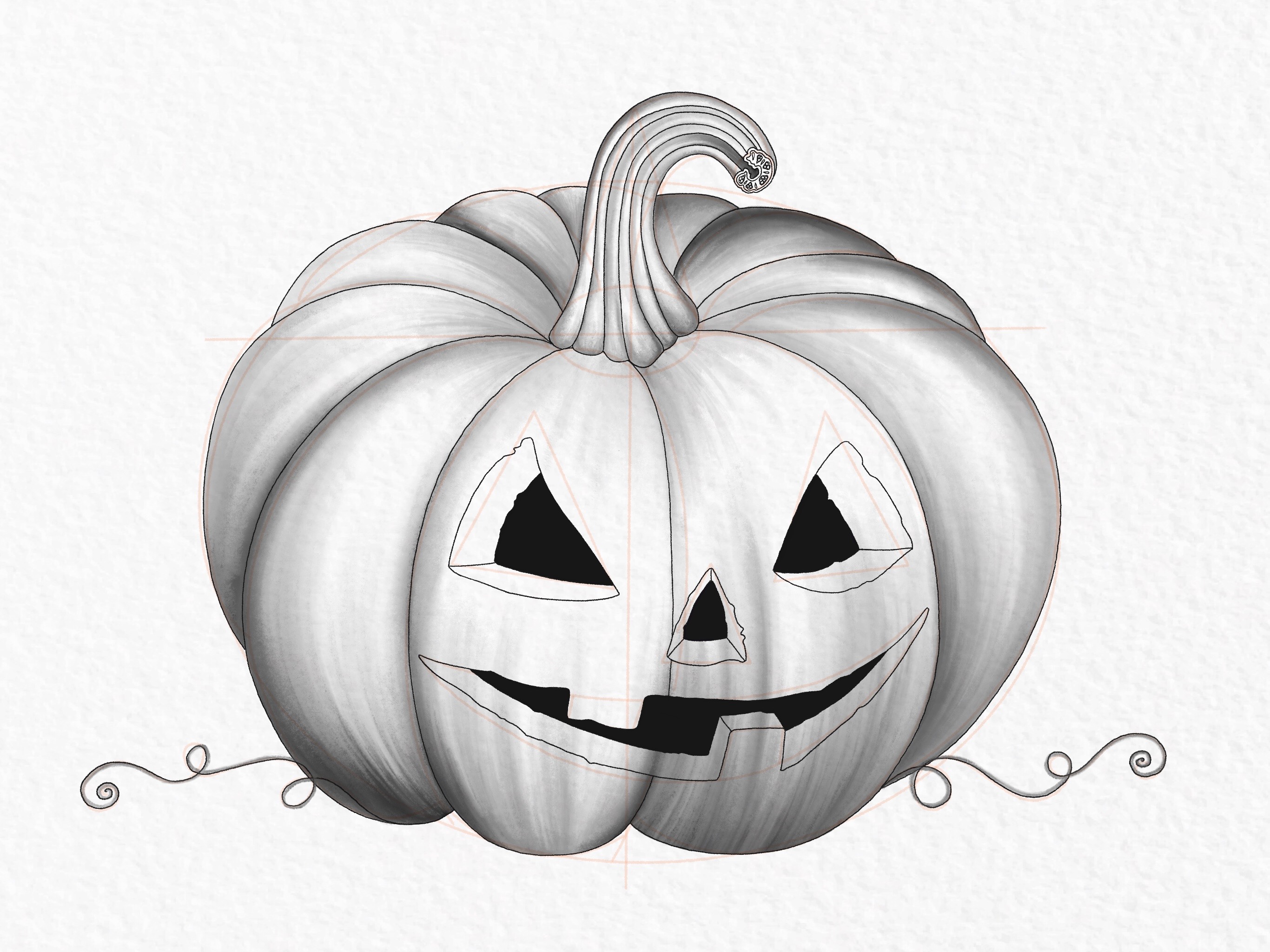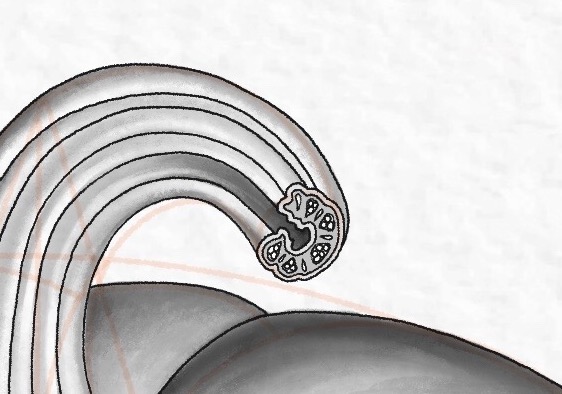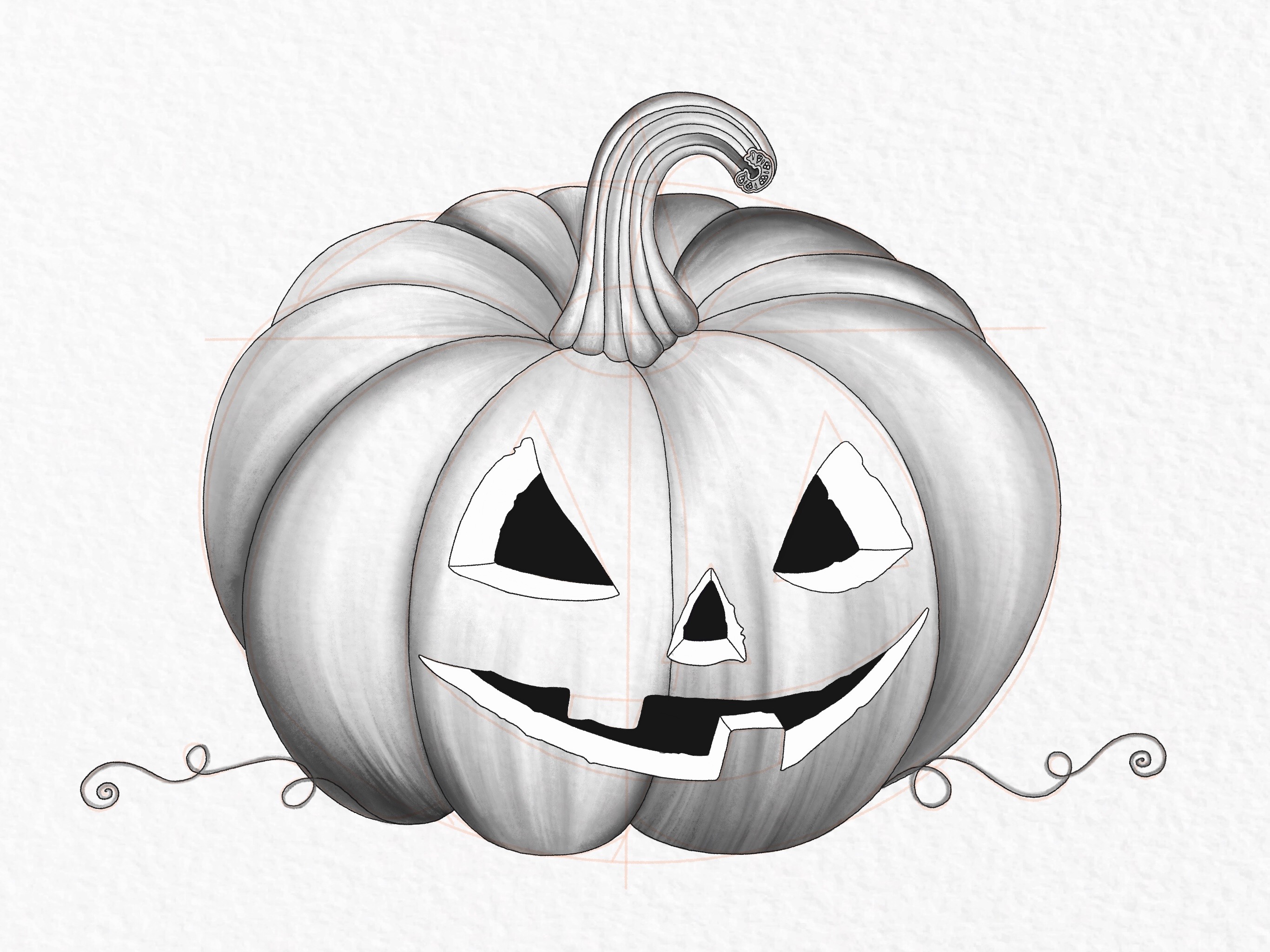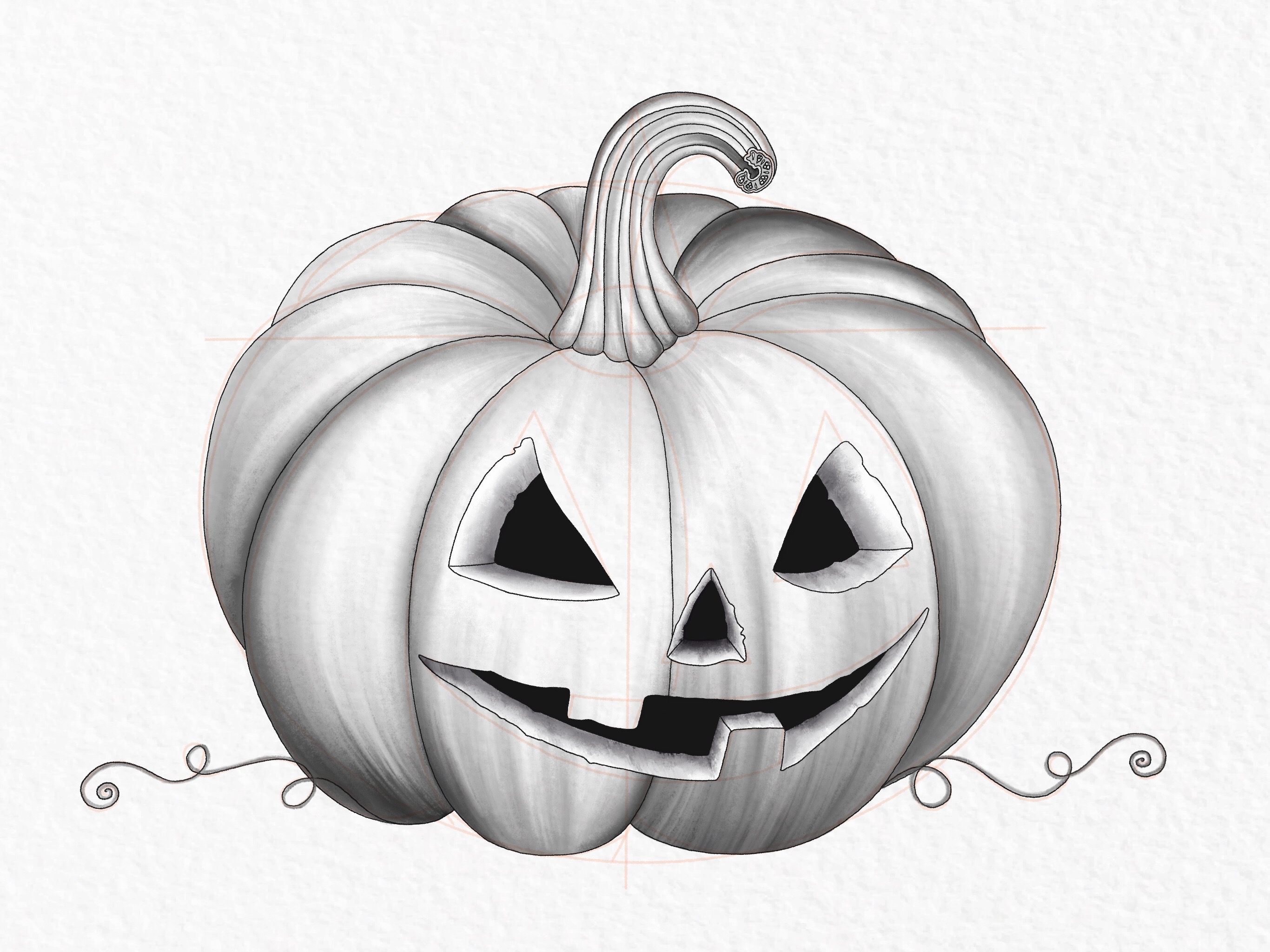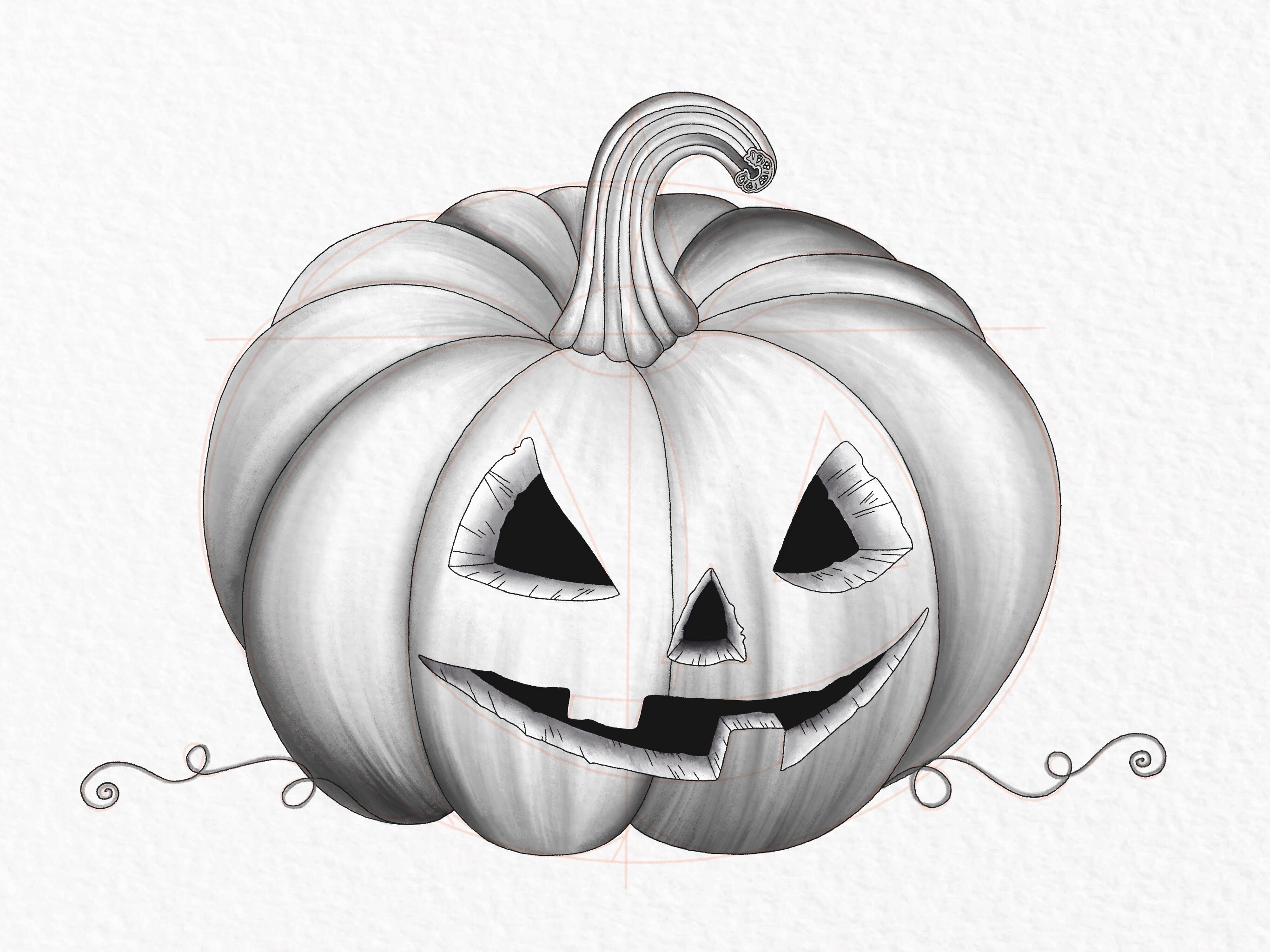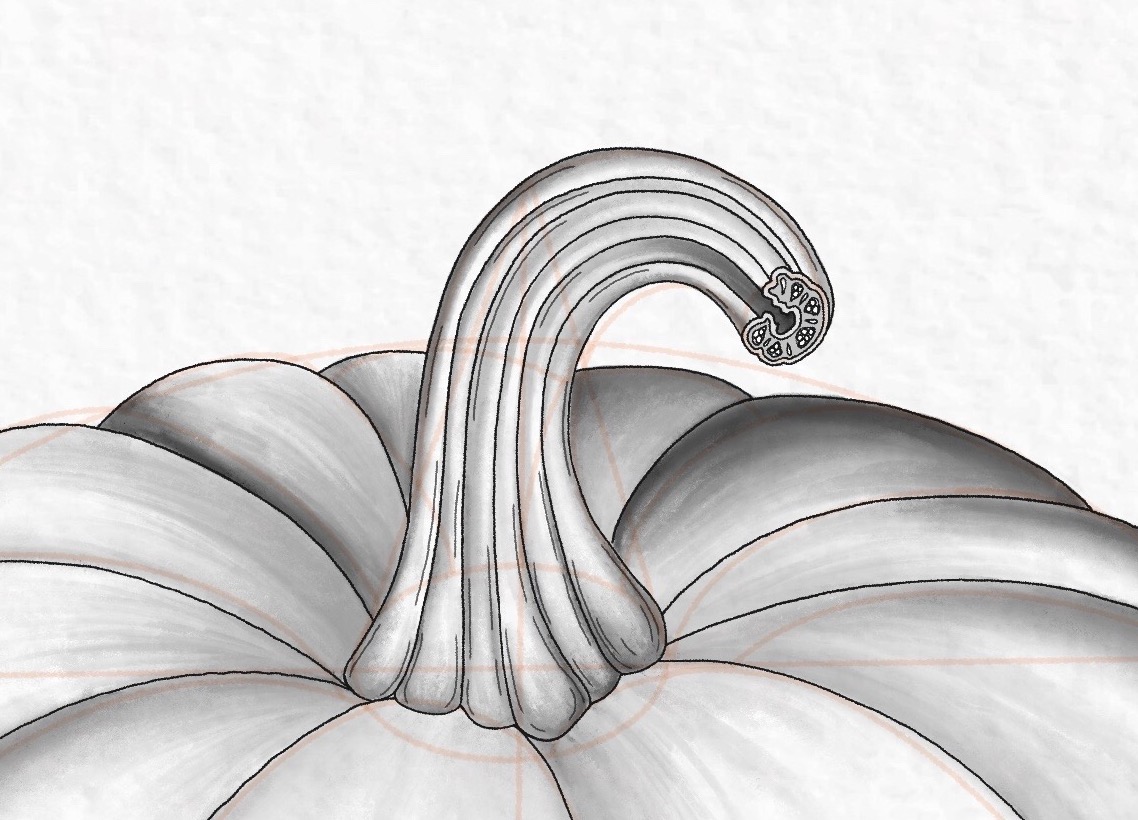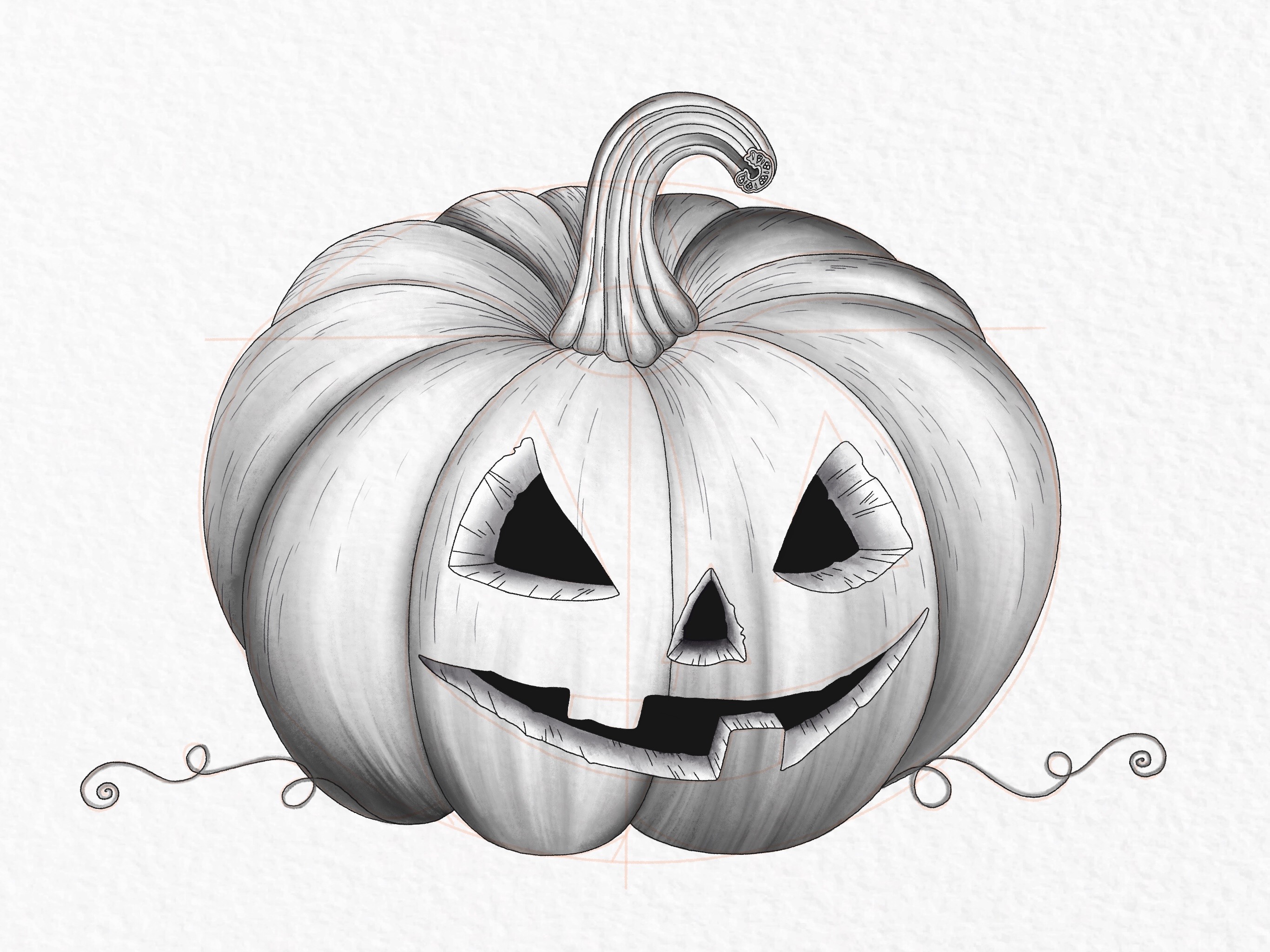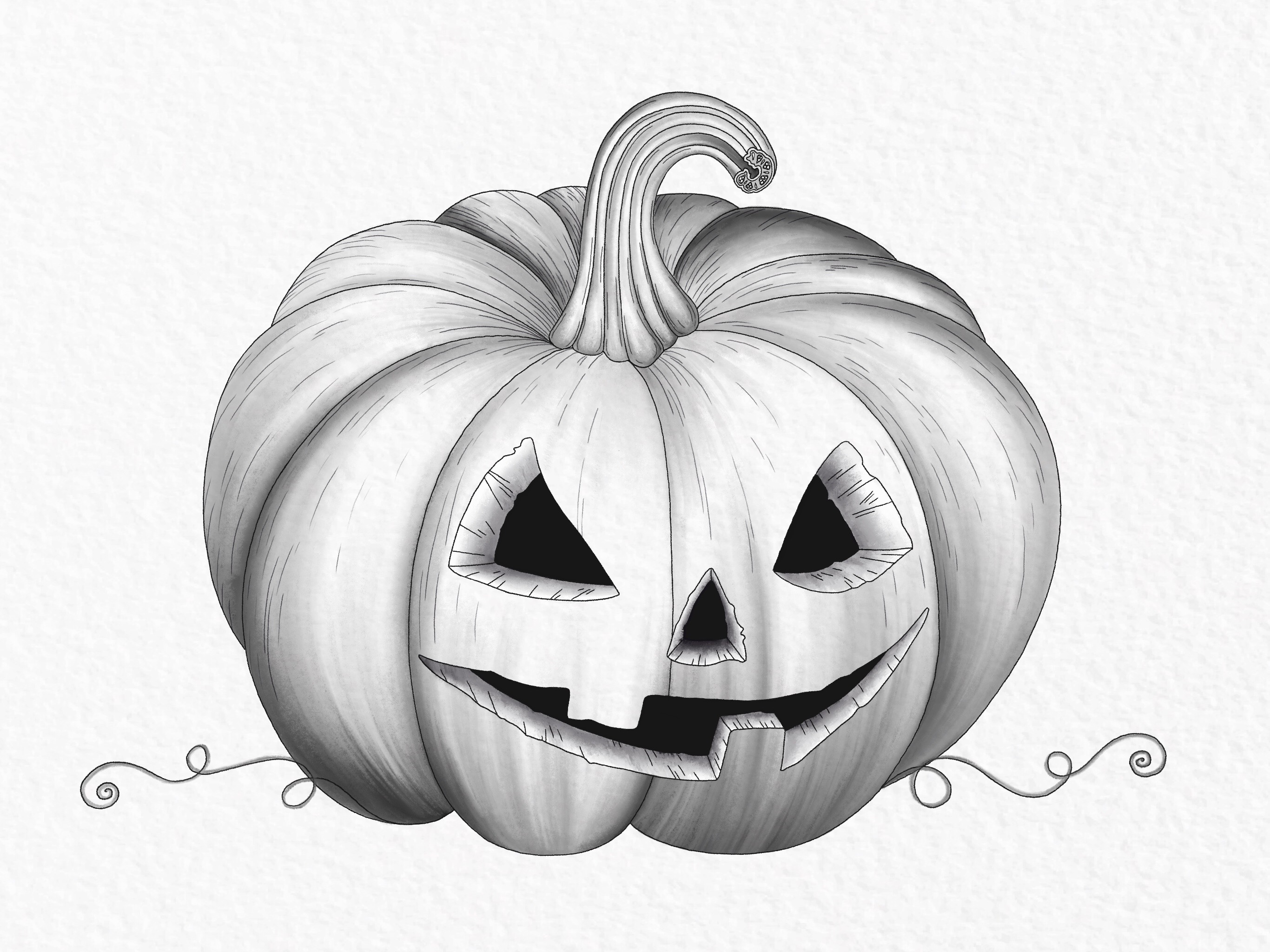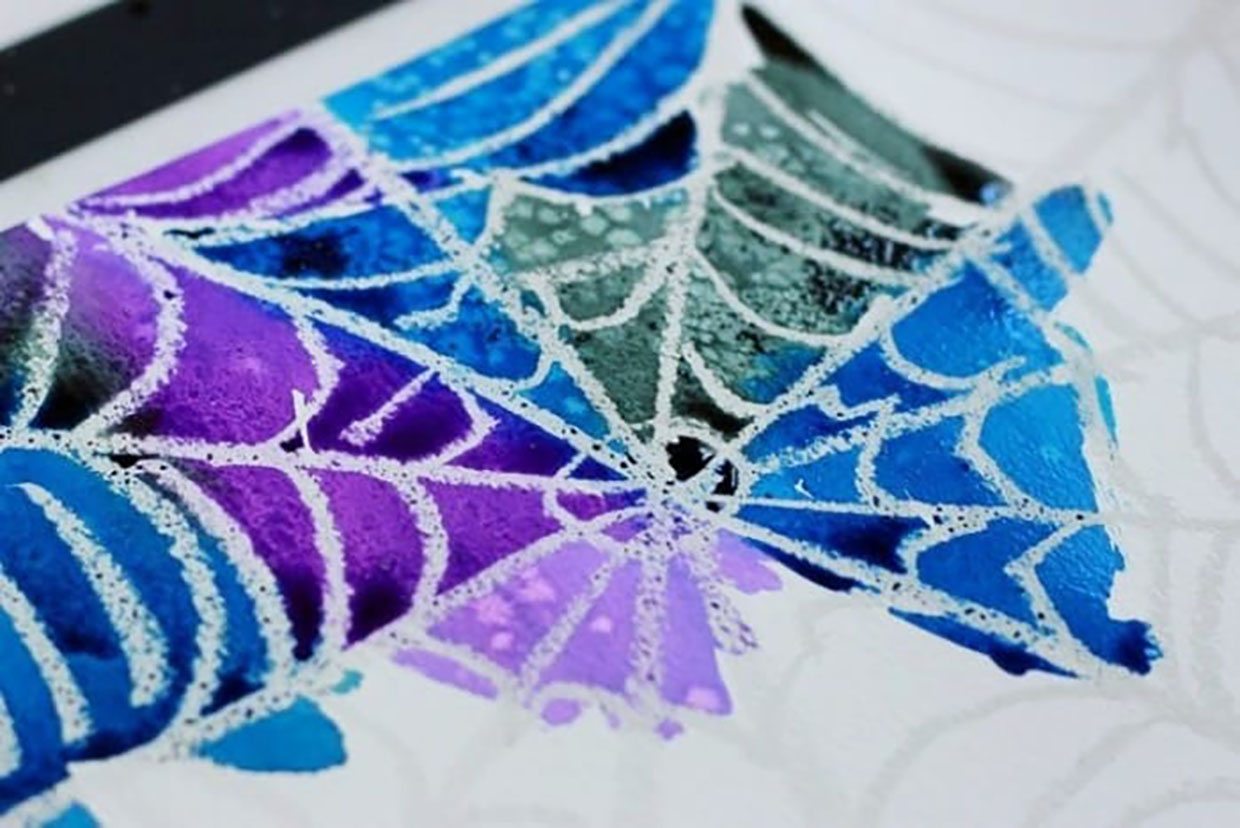Spooky season is upon us, and what better way to embrace autumn than by wrapping yourself in a cosy blanket and learning this simple pumpkin drawing?
Pumpkins can be the central focus of your Halloween artwork, but they also look great as part of a creepy scene. You can position them on the steps of a haunted house, draw them on a window sill or create your own fun Halloween cards!
This pumpkin drawing starts life as an oval, which is then segmented and given character. You can add as much or as little detail as you like to create your own chilling Halloween scene.
Our pumpkin drawing tutorial will show you how to build up the basic form using curves and familiar shapes, then add a spooky face to bring your pumpkin to life. To finish we’ll add some shading and details to make it pop.
For the purposes of this easy pumpkin drawing tutorial, we have used orange to show where you should put the construction lines, then lightened them when adding the detail on top.
If you want to draw a pumpkin to celebrate autumn or Thanksgiving, simply skip a few steps and leave off the pumpkin’s face.
Anyone can learn how to draw a pumpkin with our step-by-step tutorial! Read on to find out how…
Top tips for pumpkin drawing
What’s the secret to creating a hauntingly good pumpkin drawing? Check out these expert tips:
- Draw a real pumpkin: If you can, practise drawing pumpkins from real life. Although we’re all familiar with the stereotypical (round) pumpkin shape, pumpkins can be squat, tall, uneven or pear-shaped.
- Change the pumpkin’s shape: If you’re turning your pumpkin drawing into a Jack O’Lantern, try experimenting with different shapes of pumpkins to give your pumpkin its own unique character.
- Look closer: Examine the texture of the skin of the pumpkin. Is it smooth or bumpy? Adding texture can make your pumpkin drawing more realistic.
- Think about light and shade: If you’re sketching from real life, notice where the light source (Sun or a lamp) hits the pumpkin. Use this to decide where to place your shadows and highlights.
- Be imaginative: If you want to create a pumpkin drawing that has more of a fantasy feel, try extending the vines and making them curl up around your pumpkin.
- Create a natural-looking stalk: Look at the way the stalk grows. Does it grow straight? Is it twisted? How long is it? Is there a leaf still attached? Bring these details into your pumpkin drawing.
- Keep your drawing tidy: If your drawing becomes scuffed or messy, trace and transfer your drawing to a new piece of paper using a lightbox. To keep your drawing neat, make your initial sketches very light and plan out your composition before adding the details.
- Showcase your sketching: If you want to make a feature of your initial construction lines, try sketching them in coloured pencil or alcohol marker, then go over the top of them with a fineliner pen to add the details.
Pumpkin drawing materials
Winsor and Newton sketching set
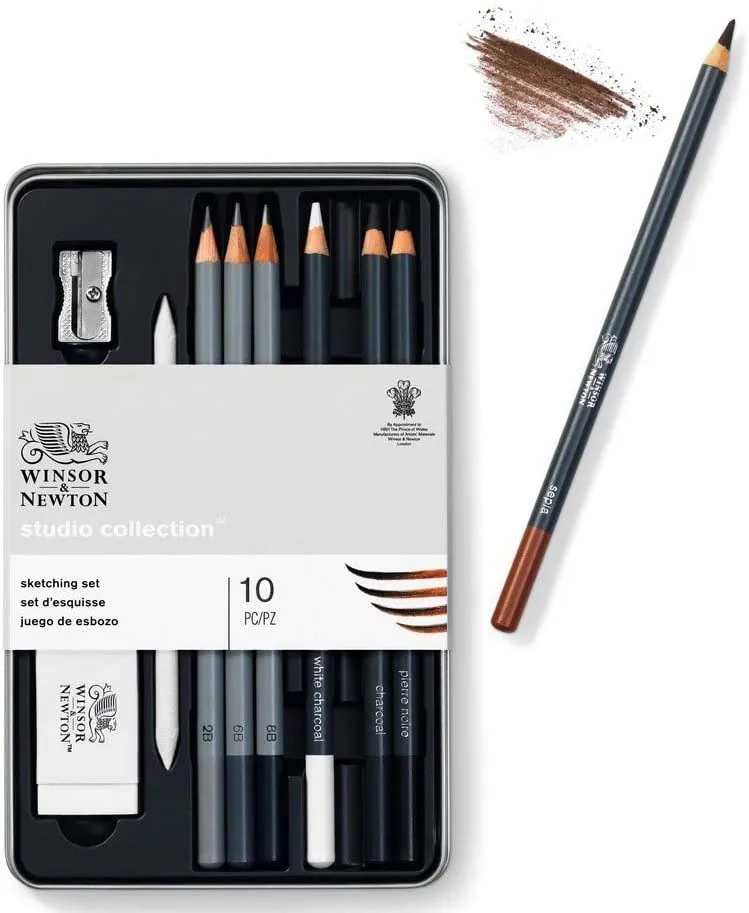
Lightly sketching the rough shape of the pumpkin is a great way to build confidence before you add intricate details. You can use any pencil to get started, but if you want to get the most out of pencil drawing we recommend getting a set with a selection of different hardnesses.
This selection from Winsor and Newton has been specially designed for shading and drawing. It includes a white charcoal pencil, medium charcoal pencil, hard charcoal pencil, sepia colour pencil, plus a 2B, 6B and 8B graphite pencil, a blender, an eraser and a sharpener.
Faber-Castell Grip 2001 mini set

It’s hard to go wrong with this mini pencil set of two B graphite pencils and a mini pencil sharpener. The pencils feature Faber-Castell’s patented soft-grip design, which is essentially just raised dots to create the grip. The grip helps with control and prevents fingers from slipping while you’re creating your masterpiece.
The ergonomic triangular shape ensures you can keep sketching (or writing) while minimising fatigue. The lead is fully bonded with the wood surround, which makes these pencils particularly break-resistant. No need to worry about the lead sliding out in chunks like other brands.
Daler Rowney Ebony sketchbook
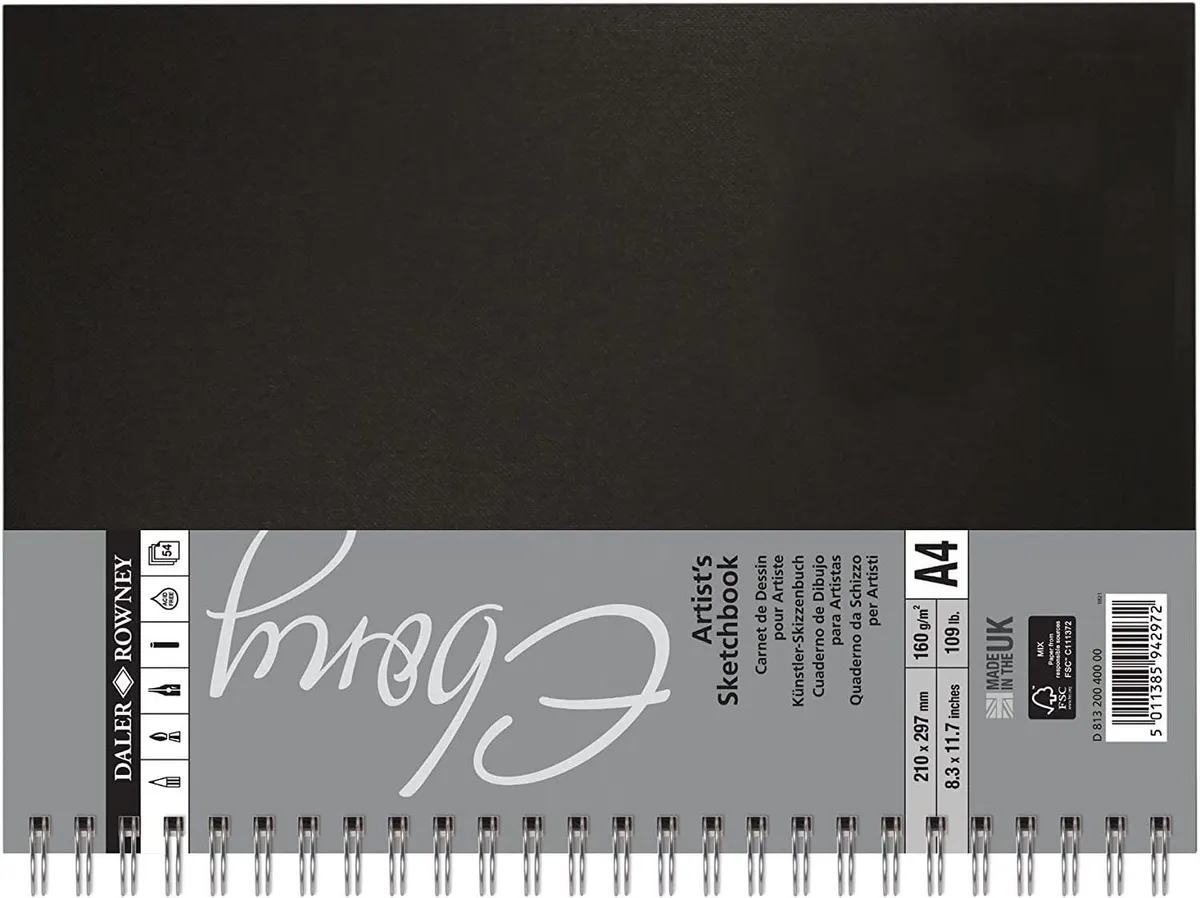
You can use any type of paper for this pumpkin drawing tutorial, but we recommend working with thicker paper and something with a smooth grain. This makes erasing the construction lines easier, as well as tweaking the piece if you need to rework some of the areas.
If you’re sketching outdoors, then working in a hardback sketchbook is ideal, and offers some degree of protection from the mud and muck of the outdoors. If you've watched our rose drawing video, this is the sketchbook we used!
iPad Pro

If you want to branch into digital art, or don’t fancy covering your desk in pencil shavings and eraser debris, then the iPad Pro paired with the Apple Pencil is a great option.
Any iPad will offer you a smooth drawing experience, and as (most) of the apps are constantly being updated, you can be confident that it’s up to the task. The model of iPad you want just boils down to how much storage you need and the types of apps you want to run.
As operating systems are taking up more and more space on your tablet, it’s important to keep this in mind if you’re looking to buy a new iPad.
As time goes on and you install more updates, the new OS will gradually take up more and more space – and you’ll have less storage for your digital art. So, it’s worth opting for maximum storage from the off, if you can afford it.
Apple Pencil

At the time of writing, the 2nd generation Apple Pencil really is the gold standard when it comes to iPad accessories. Not only does it make digital drawing much more fluid and tactile, but it has also had several upgrades when compared to the 1st generation. By double-tapping, you can switch between the tools you need, which is very useful when alternating between sketching and colouring, or when working on different layers.
The 2nd generation Apple Pencil magnetically attaches to the iPad Pro, and charges wirelessly. If you do happen to put it down on a flat surface, like your craft desk, the flat edges keep it from rolling away.
Ready to learn how to draw a pumpkin? Follow this step-by-step tutorial and learn how to create your own easy pumpkin drawing this Halloween.
